- Work with us

- Faroe Islands
- Switzerland
- Slow travel resources
There’s something about walking. The fresh air and the simple, natural rhythm of it appeals to humans, fits with us. But maybe you think it’s a bit boring? Decided you’re more of an ‘indoor kind of person? Or just have unpleasant visions of waterproof trousers. It’s understandable.
So here we set out exactly what our reasons to travel in this way really are, and how it’s something anyone really can and should do, for all kinds of wonderful reasons.

7 reasons to travel on foot:
To get somewhere.
It’s a type of transport a bit like any other, but with no departure timetables, no exorbitant ticket prices, or stressful new motorways. It’s an honest-to-God great and simple way of getting to and seeing new places, both near and far.
For the experience
When you walk though, it’s not just getting there, it’s actually getting to see and experience every single place you go through. If you’re the type of person who’s just curious about the world, about how different people live, then walking is perfect.
You can take in tourist destinations, but also you’ll also be able to follow the shortcut locals take to work, pass through the garden allotments with perfect views of a city, or find the hidden track that only wild animals really use. Walking can show you things you didn’t know you wanted to see, and the whole scope of the actual globe unfolds.
Discovering (or recovering?) old and secret ways
There’s an amazing old connectedness to places, living arteries threading across the whole world. Sometimes these roads can be more important than their destinations.
So not all walking includes this, but if you’re going anywhere far off, you’ll be haring off into some undergrowth sooner or later. It’s beautiful and surreal and kind of humbling to stand in the middle of nowhere.
It’s healthy
To be out there stretching your legs, and yourself; use your body for what it was made for.
To think and to breathe
It’s not just for your physical health, but mental too. A whole lot of space opens up when you start to walk. It’s like your brain slows and regulates to mirror the slow, steady measure of your feet. Use it to get away, and get your head together.
Achievement
It could be a couple of miles, it could be thousands. Coming to your finish point, or back to where you started, is a glorious feeling of accomplishment.
Do any of these reasons to travel on foot resonate with you? Let us know! Catch up on the latest posts from our biggest adventure: walking the Via Francigena.
Hello there, we’re luke & nell.
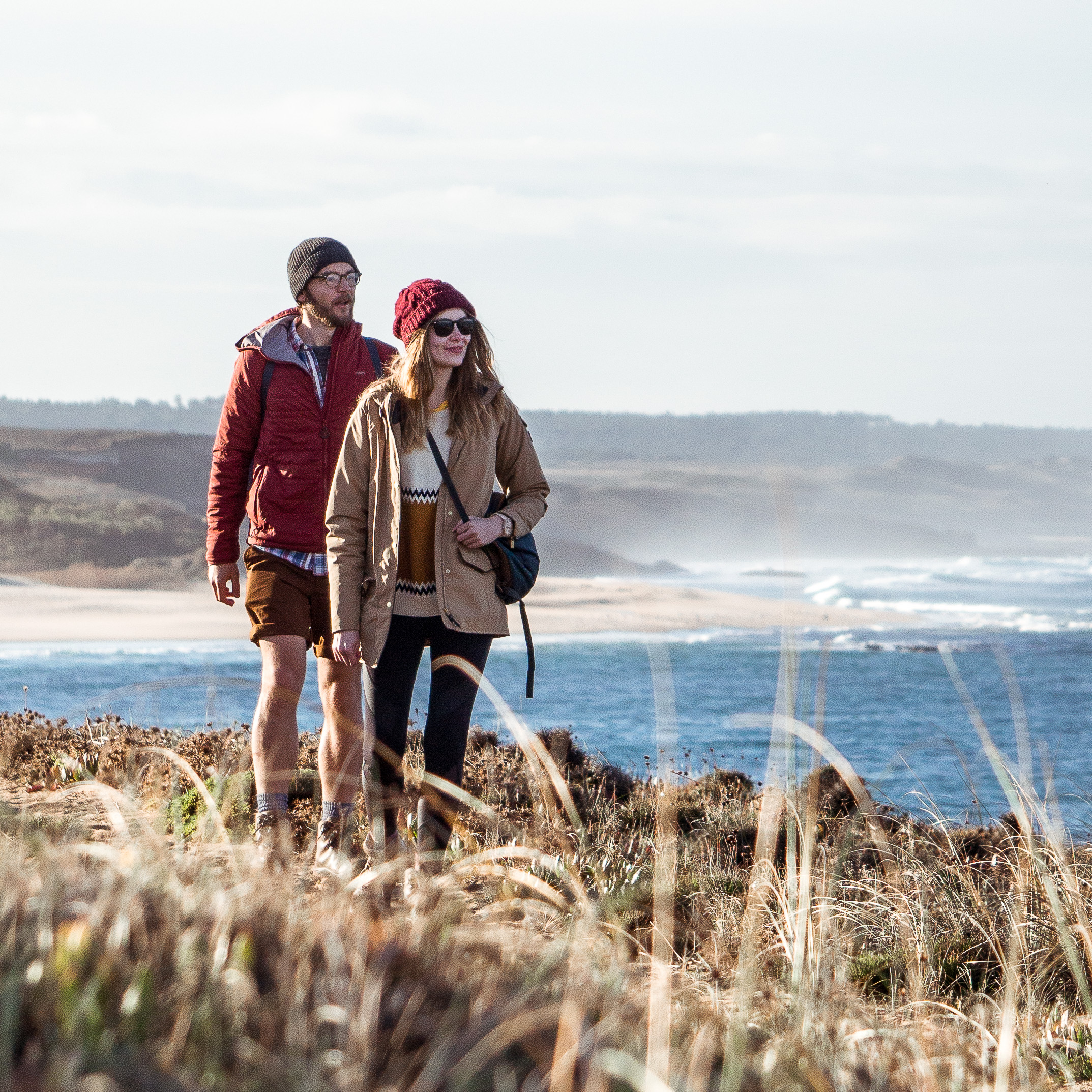
E-mails can be boring – ours aren’t! Join us for walking inspo & info
Email address:
Find what you’re looking for
Follow our footsteps, privacy overview.

Travel On Foot: The Ultimate Slow Travel
Travel on foot – it’s called different things in different countries: walking, trekking, tramping, rambling, hiking, bushwalking, bushbashing…
It’s the ultimate slow travel , taking your time to get from one place to the next, as close to the ground and to people as you possibly can.
Travel on foot more than just sport: walking is about proximity, intensity and experience . Rather than seeing as much as possible, it’s about going as deeply as possible. I’ve done short hikes and treks but someday I’ll walk all the way to a destination. I happen to live right on the Camino de Santiago, the bit that starts in Geneva and ends in… Santiago.
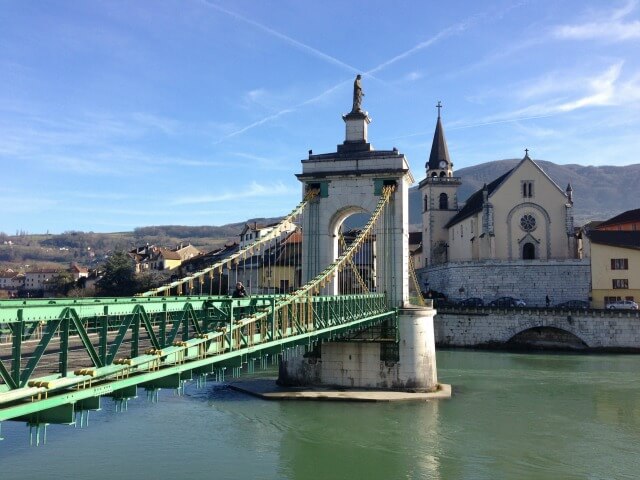
HOW TO GO FOR A WALK
Yes, of course, one foot in front of the other. That’s how I used to walk until I learned to WALK. To get the most of the experience takes a bit more than feet:
- Look at the details around you. Can you remember what you just walked by? What tree that was? Whether the ground was pebbly or rocky? What the streets are called?
- Use your senses as you walk. Can you smell the flowers, the asphalt, the fumes? Not every walk is going to be lovely. Can you hear birds in the trees or branches swaying in the wind?
- What is the weather like? Are you hot, cold, blowing in the wind?
- If you’re not in your own country, are there signs? What do they say? Are the shops different from those you know? How are people dressed?
- Can you tell anything about their culture from the way they walk with someone? Or their hand gestures? The volume of their voice or the amount of personal space they leave when they’re talking to someone? Are the church bells in the background or a muezzin? So people smile and greet one another or do they ignore them and walk by?
- Can you stop in a café and listen to conversations? Do you understand them? What are they about? Are most people in couples, in groups, alone? Are they writing, or reading, or simply gazing at other people?
- What about your body? Are you feeling unusual muscles begin to get grumpy? Are you out of breath or breathing more deeply than usual?
- Are you on a short walk or long hike, and how could you shorten or lengthen it if you wanted to?
I could go on… the point is that travel on foot is anything but just walking. Walking is involved but almost peripherally. To me, it’s about discovering a place the way it lives.
ARE THERE ANY ADVANTAGES TO THIS… WALKING THING?
Yes, of course, or why bother?
- walking is ideal if you have little time – think city walking tour or hike over a mountain but it can be as short or as long as you wish
- it’s sustainable and environmentally friendly – it’s hard to pollute when you’re walking (especially if you pick up after yourself)
- it keeps you fit, de-stressed and serene
- it allows you to soak up the culture – you can experience a place with all your senses, not just see it
- it puts you in touch with nature
- it allows you to meet local people along the way and see what they see
- it brings you close to the tastes, smells and sounds of your destination (see above)
- it lets you stop wherever you want and progress at your own pace
- it’s free!
IF YOU’RE GOING BEYOND THE CITY
Here are a few basic rules to help you stay safe when you travel on foot, especially if there are no crowds around:
- always wear something bright enough to be seen
- let someone know where you’re going, and when you expect to arrive
- if you’re heading somewhere isolated, try to team up with other hikers (why not look for a travel companion ?)
- if you’re going beyond a single city, check online for updates (I like to check travel forums ) – you don’t want to hike to another city in the middle of a flood
- depending on how far you’re going, carry a good map/GPS/personal locator beacon and any phone apps liable to help you find your way
- bring along plenty of water and food – and possibly a walking stick to help you walk and to ward off snakes and wild dogs (just in case) or slippery autumn leaves.
While going on foot from one place to the next has plenty going for it, there are some downsides… especially if you’re on a longer walk or a hike.
- you’ll see less than someone whizzing by on motorized transport – you can only walk so fast and so far, after all
- this kind of travel requires more time so you’ll have to be circumspect about your itinerary if you don’t have much travel time
- you may spend a lot of time dirty, sweaty and tired, and there may be no shower in sight
- it can be physically demanding so your health and fitness are factors
- your hiking equipment will wear out faster
- in some places distances can be huge and walking nearly impossible as a result
- it can be dangerous, in countries with conflict, disaster, extreme poverty or a high crime rate.
Despite these constraints, travel on foot remains a viable alternative . I’d love to do more of it – the best I’ve managed so far is to walk over a mountain from one town in Central America to another, and a trek across a mountain in northern Uganda. Both are still memorable, years later.
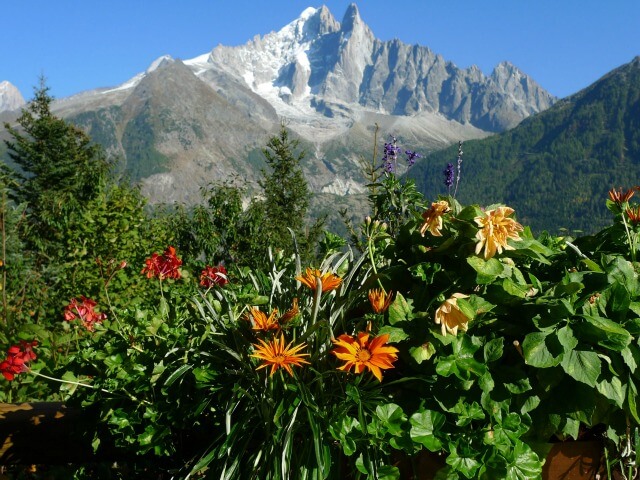
— Originally published on 31 July 2011
If you liked this post, please share it!
.png)
Follow us on
- Oct 2, 2022
5 reasons why travelling on foot is the best way to experience a place
Updated: Sep 27, 2023

In the day and age of accessibility where tourism is booming like crazy and wants everyone to see places at their convenience is quite noble, but it comes with a list of cons which unfortunately has taken over the feeling and meditating portion of travel. Even in the higher mountains and deep jungles you will find people playing loud music, getting great network connection and booing booze!
The best part about a fit and healthy lifestyle is that it has always allowed me to explore that extra unknown terrain where buses and SUVs couldn't access. For instance, a beautiful virgin beach right in the center of a dense forest in Gokarna or watching the 5 am sun from Dzongri top in Sikkim required me to be on foot for quite sometime and start pretty early to witness the magic. The common public these days wants to explore places which were once virgin because someone somewhere posted an Instagram reel about it and slowly they made concrete roads to access it.
Why do I feel travelling on foot is the best way to experience a place to the fullest?
1. You find a deeper connection with the place:
By being on foot I don't just mean trekking or climbing mountains, obviously those are one of the mediums that help you connect well with nature, but simply walking down the road in a new city, looking around, taking frequent halts and exploring the area or just being a part of the place helps you connect with the place a lot better esp. in regards to the local people who you can talk to and understand a lot more about a place. I would rather take a 5 km stroll and look around rather than take a 500 rupee tour package to witness a crowded place that doesn't even allow me to relax.
Of course, sports like trekking and climbing also bring you a lot closer to the terrain and nature because you're constantly on your foot or all fours smelling, breathing, sleeping, drinking and eating all that is available around you. On top of this, you have little to no cellular network which lets you be and spend time with yourself in nature, who wouldn't love that!
Simply walking down the road in a new city, looking around, taking frequent halts and exploring the area or just being a part of the place helps you connect with the place a lot better.

2. You get to witness the hidden beauty:
You are lucky that we are able to walk around and explore a lot of things. You really don't need a lot of overtly technical skills to explore, just be curious! A vehicle can only take you so far and unfortunately the access is granted for others like you too. What is the point of gazing at a swarm of people trying to click photos. Rather, spend some time looking around and walking towards things no one turns around to see. I am sure, most often than not you will witness the hidden gems of those places, the virgin beaches, secret caves, a beautiful waterfall or a serene lake.
Although beware, being hidden and virgin, these areas may not be used to human touch. Be careful navigating the terrains, looking out for wild animals or even dogs if venturing alone :D (I have had a lot of dog problems esp. on a solo hiking trips :P). Better to go as a group of min 2 people.
The idea is not to scare you but to share the real scenario. Often times someone on social media might urge you to venture alone in the wild but there are a lot of things one needs to be aware of before embarking on even a small detour from a safety standpoint. However, being aware has always helped me navigate carefully and luckily I have witnessed a lot of secret beauty which I wouldn't have accessed through a general tourist vehicle.
A vehicle can only take you so far and unfortunately the access is granted for others like you too.

3. It is sustainable for the environment:
It goes without saying that when you are exploring places on foot you are minimizing the carbon footprint by opting out of vehicle usage. More so, the deeper connection I wrote about in the first point also encourages travelers to take care of the terrain because even minute details like plastic trash are clearly visible. When you witness the astounding beauty underwater or from the top of a mountain, you would want to take responsibility as a traveler not just for you and your beloved but also for the future generations.
One can take action simply by keeping a tiffin box, a mug and a water bottle to enjoy the food at a place without piling on to the existing trash. By using a tiffin box you will eliminate the plastic-coated paper plates and plastic cutlery, by using a personal mug you will eliminate the use of single use plastic and plastic coated cups that are thrown away like crazy all around us and same goes true with your personal water bottle which will eliminate tons of plastic mineral water bottle use.
If you need recommendations, you can use Lifestraw water bottle which is a decent investment and makes you independent in a way that you don't require to chase people for water. Apart from sea water(which I haven't tried yet), you can filter out almost any water source - rivers, lakes, wash-basins, local water taps outside your home.
When you witness the astounding beauty underwater or from the top of a mountain, you would want to take responsibility as a traveler not just for you and your beloved but also for the future generations.

4. You realize you were over consuming:
In continuation to the above point on sustainability, when you walk around a certain place or trek on a mountain, you understand the need to carry only the essentials. Because slowly you realize that in order to get the most out of your experience, you don't need much - just a couple pairs of clothes, safety and medicals, money and IDs and you're good to go. No where you will find that these things aren't enough. Of course, this pill is quite difficult to swallow at first and I myself am still working towards packing a lot lighter, however, for most of my trips that are 10 odd days or even longer, I've forgotten about whether I was repeating my clothes or not because frankly the experiences were so deep that it hardly mattered.
When you first venture out, you are highly likely to pack up as much stuff as possible to fulfill your never ending needs. But slowly you will realize that half the things are just sitting in your backpack or suitcase and worse, you will have to carry all the load.
With the Godlike experiences in your travels on foot, you slowly tend to declutter your stuff and over time this becomes a habit and you start following this in your day to day lives too. You realize that you have been consuming way too much and creating or acting way too little. But since traveling on foot is hard work, you understand consumerism and how it has encompassed the world.
You realize that you have been consuming way too much and creating or acting way too little.

5. You develop intangible qualities of patience and self-confidence:
For any average tourist, it is easy to check out for the infinite tour packages available online and book one without too much hassle. However, on and off from home you're in a similar pattern - The package tour operator is your go to person to handle your meagre queries ranging from food preference to wash room availability to delays on the way. Mostly, you are in a hurry to witness the famous "points" of a region brought into limelight by others. You would care less about the environment by choosing single use plastic regularly and sometimes dumping it where it isn't supposed to. Also, you would rather be clicking photos than being at a certain place because it would be flooded with other tourists.
Not personally judging the "tourist" way of travel, but in reality, transitioning into a more aware traveler has had a lot of positive benefits over the standard way. Imagine exploring hidden beaches or detouring to find out a secret cave by overcoming fear, figuring out your food and shelter while not being in hurry and let the travel take its course, being on foot and responsible for the environment by keeping your own utensils. Why won't a person develop self-confidence by doing something out of the norm and patiently being in the flow of the journey? How beautiful is that! This pattern flows into your day to day life as well and enhances your quality of life.
Imagine exploring hidden beaches or detouring to find out a secret cave by overcoming fear, while not being in hurry and let the travel take its course, being on foot and responsible for the environment by keeping your own utensils. Why won't a person develop self-confidence by doing something out of the norm and patiently being in the flow of the journey?

__________________________________________________________________________________
Thank you for reading this article. I hope it adds some value to your life. I am a certified strength coach and love to travel. You can follow my travel stories on Instagram as well : @outlaw_wander
For fitness related content and coaching, follow : @outlaw_lift
Recent Posts
When mountains call
Solo trip to Vattakanal and Kodaikanal
Solo DIY trek in the Himalayas
Nice Vidhu. You made me realise why I carry so much on the treks. Keep up the good work and great thoughts. Regards, Aditya
Thank you so much Aditya for your kind feedback. I hope you have greater adventures in the future :))
E-mail: [email protected]
Mobile: +91-9987909563
Thanks for submitting!
How Should You Pack to Explore Europe on Foot?

It’s no secret that exploring on foot has become not just my favorite thing to do but also my favorite thing to talk about. So I was thrilled when family, friends, and friends of friends started asking for my advice on how to do it. I loved helping them prepare for their trips and hearing their stories once they were back. But the most exciting thing to me was that people who started exploring on foot didn’t want to stop—just like me! Even before they finished their first trail, they were already thinking about the next.
And it wasn’t just people who loved to walk. I witnessed grudging exercisers and those who had to dig deep because they’d never walked that far in their lives become excited about walking for days at a time. I saw trip after trip reignite the passion of experienced travelers who felt like they’d seen—and done—it all. For those new to travel, it became the gold standard that they measured all other trips against. It was amazing.
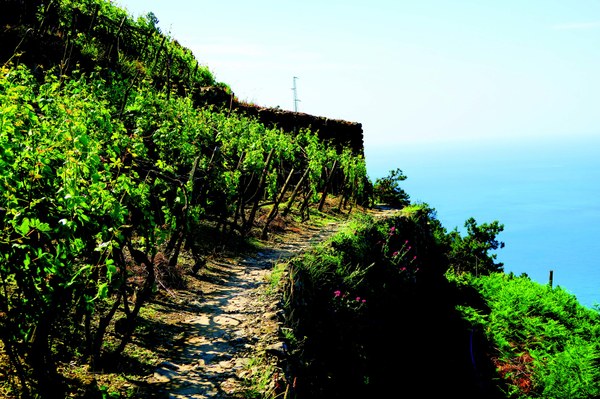
There are so many reasons to explore Europe on foot, from enjoying authentic cultural experiences in the best small towns to exploring historical wonders without a crowd of tourists in tow, all on a smaller budget than you would spend on traditional sight-seeing (for more details, check out the Top 5 Reasons to Explore Europe on Foot ).
Watching other people become as enthusiastic as I was about exploring on foot was a game changer for me. I realized it wasn’t just the solution to my problem with travel—it was the answer a lot of other people were looking for as well. And that’s when spreading the word about this better, more authentic way to travel became my life calling—and I started writing Explore Europe on Foot: Your Complete Guide to Planning a Cultural Hiking Adventure .
Packing To Explore On Foot
I love getting my gear together for a big trip. It is my very favorite part of the planning process, because there’s something completely energizing about imagining yourself in every scenario you could be a part of: hiking a gorgeous forest route, enjoying a chef’s tasting menu at a hole-in-the-wall restaurant you find along the way, swimming in a sea-blue hidden lake. That could be you, and I’m here to help you make sure you’re ready for any and every adventure that awaits you while exploring Europe on foot.
However, that doesn’t mean you will be packing a lot. In fact, I encourage you to pack as little as possible. Remember, unless you’re splurging for luggage transfer, you’ll be carrying everything you pack on your back—for days on end. Be kind to yourself and keep the weight down. If you follow the packing lists in my book Explore Europe on Foot , you’ll have everything you need for days (or weeks!) of enjoying both trail and town—all in one carry-on-size backpack that weighs no more than 18–20 pounds (8–9 kg).
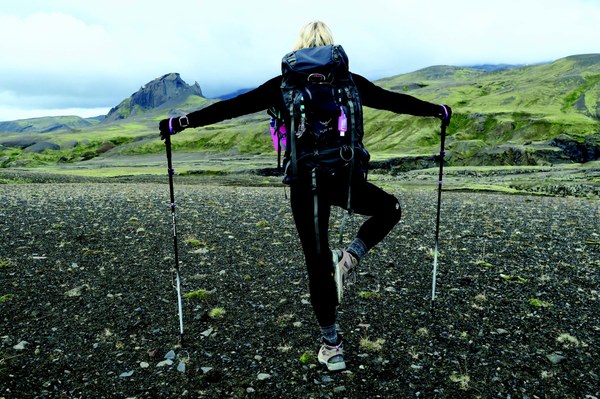
Here are five general strategies that should govern all of your packing, whether it’s clothing, footwear, toiletries and medication, tools for the trail and for travel, or electronic tools. Let the work—or should I say fun—begin!
Make sure everything is multifunctional.
Almost everything in your pack, from clothing to toiletries, should be able to function in multiple ways. For example, to be worth its weight, a scarf should go with all of your tops and outfits. It should also be able to function as a shoulder cover in case you visit a church or a headscarf in case you’re hoping to check out a mosque. If you pack sandals, they should be able to work as functional walkers, a dressy option for pairing with slacks and a sweater, or as shower shoes.
Keep everything as light as possible.
Whenever you have a choice between lighter and heavier options, always choose the lighter option. It’s worth spending a little more to keep your pack lean and mean. A great example is toiletries. Even if you’re traveling for a couple of months (lucky you!) and you think you can use a full stick of deodorant, buying smaller and lighter travel sizes (even if it’s more expensive over time) is a great way to reduce pack weight. As they say, to save pounds you have to shave ounces. Every little bit counts.

To go big, keep things small.
Whenever possible, opt for smaller, more compressible items over larger, bulkier ones. Think a puffy down or synthetic coat instead of a fleece jacket or a small travel towel instead of a full-size one. This is a great opportunity to get creative— I’m always cutting back fabric I don’t need (like my travel towel) or procuring tiny containers that hold exactly the amount of product I need for however long I’ll be gone. (At this point, I have the amount of face lotion or toothpaste I use per day down to a science—and soon you will too.)
Invest in high-quality items.
Choosing multifunctional, light, small gear will go a long way toward guaranteeing you a good experience with your gear. But I suggest you take things one step further by investing in high-quality items to the extent that you’re able. What do I mean by high quality? I mean well made by a dependable manufacturer.
Remember, you’ll use your gear a lot while you travel. You’ll stress your clothes by wearing them every day, not to mention doing highly physical activities in them and then washing and drying them over and over again. You’ll zip and unzip your backpack hundreds of times over the span of a week.
When you choose high-quality items, your gear is much more likely to put up with the beating you’ll put it through—and that means that on your trip you won’t have to deal with clothes that unravel or zippers that break. (I’ve been there and, trust me, it isn’t pretty!) Choosing high-quality gear can seem like quite an investment up front, but it will pay dividends on trail.
When in doubt, leave it out.
If you’re like me, you love to be prepared for anything and everything. You don’t feel at peace unless every situation is planned for—“I might need this” or “I might need that”—and suddenly you’ve added 10 pounds (4 kg) to your bag that you’re probably not going to use. Tame those thoughts not by asking “Will I need this?” but “Will I need this enough to justify bringing it?” Remember, if you really need that bottle of conditioner or that extra town shirt when you’re in Europe, you can always buy it there—and it’ll be a good souvenir. If you’re on the fence about something in your pack, don’t bring it.
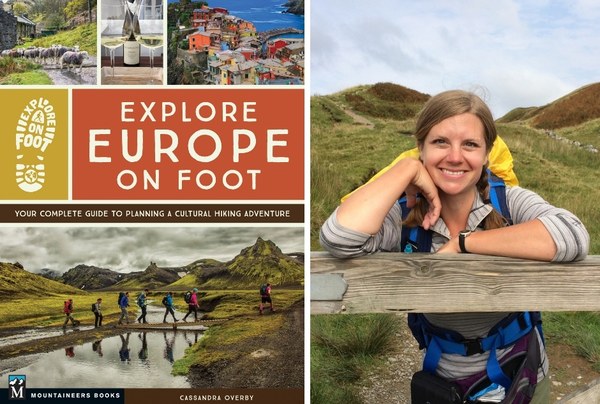
Excerpted and adapted from Explore Europe on Foot by Cassandra Overby. Pick up a copy today to start planning your own cultural hiking adventure (and take advantage of Cassandra's detailed packing lists, planning checklists, handpicked trails, and more). You can meet Cassandra in person at one of her upcoming events .
Add a comment
- Log in to your account
- Create an account or join
Recommended Reading
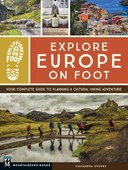
Explore Europe on Foot
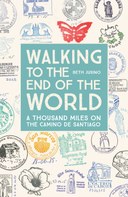
Walking to the End of the World
Also in the blog....
The Mountaineers
Helping people explore, conserve, learn about, and enjoy the lands and waters of the Pacific Northwest and beyond.
- Privacy Policy
- Terms & Conditions
- Mountaineer Magazine
Mountaineers Books
An independent nonprofit publisher
- Bookseller Info
- Press Inquiries
Connect with the Mountaineers Community
Connect with the mountaineers books community.
The Mountaineers®, a 501(c)(3) nonprofit organization. Tax ID: 27-3009280.
Mountaineers Books is a registered trademark of The Mountaineers®, a 501(c)(3) nonprofit organization. Tax ID: 27-3009280.
What it’s like to travel across the USA entirely by foot
Jennifer Bradley, The Daily Telegraph
October 23rd, 2012 at 8:58 AM EDT
Jennifer Bradley was the first British woman to cross the US on foot, a journey that takes more preparation than any standard cross-country journey but provides an unmatchable experience.
Samantha Shankman
This summer, I ran across the USA from the Pacific to Atlantic in 80 days, on trails wherever possible. I was the first British woman to cross the US on foot.
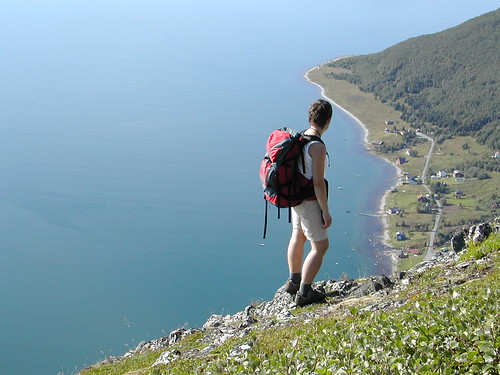
The cross-country hike took nearly three months. Photo by Gunnar Hildonen.
How did the idea come about?
A friend, James Adams, ran from LA to New York last year (and wrote about it for the Telegraph – see here ).
I was looking for a similar trip but without so much road running. An American (recently retired from the Navy) advertised for fellow cross country runners to join him on a route using as much trail as possible, and I piggy-backed on his military-style organisation and impeccable planning.
Did you go alone?
No, I couldn’t have done this alone. There were four runners who started the run – three American men and me. We also had a big crew (about 20 people helped over the whole summer) driving our gear, providing us with food and drink along the way. I also had massive support virtually from back home!
When did you go?
We set off on May 30 on the Pacific coast of Washington state and finished on the Atlantic side in Delaware on August 17. I had to take special leave from work, who were very supportive.
Can you pick out a highlight of the journey?
Some of the trail running was through really stunning countryside. In particular the panhandle of Idaho – the Coeur d’Alene trail – was beautiful.
Any encounters with the wildlife?
Yes, I saw a moose just off the trail, in the undergrowth, eating away at the bushes. It was only about 10 or 15 metres away. I stopped to take a picture on my phone, but it was really poor quality – it’s not that obvious it’s a moose! Or maybe it was just well camouflaged.
We had also been told there were bears along a couple of sections of the trail, from Washington into Idaho, and in Montana as well. In Idaho, I was in a really wooded section, away from the trail and just heard this big crashing around me. At first I thought it was a tree falling down, it was so loud.
I turned round and saw a bear running off. It was a big bear, but I didn’t stop to work out what species it was – I starting moving in the opposite direction fairly quickly!
Any moments when you regretted the trip?
Yes, a couple. When I tore a muscle (top of the thigh) in the first week and walked for several days in pain. At that stage I was in quite a lot of pain, and thinking that I was probably going to have give up – but kept on going with everyone’s support. Then during the middle portion I became pretty bored with the endless cornfields and cattle farms in Iowa and Illinois.
What was the trickiest bit?
Apart from injuries and running-related fatigue the worst moment was being stopped in Montana and told by the local deputy sheriff that the road ahead had collapsed under the heat of a wildfire and the route was impassable, even on foot. We spent a nervous two hours trying to figure out a diversion which was difficult as the US highway we were on was pretty much the only main road through miles and miles of very remote Montana. Eventually we re-routed down small, dirt roads and ended up having to leave Montana early and go south into Wyoming…
Best tip to someone following in your footsteps?
The logistics of such a trip are even harder than the running – do everything you can in advance from hotel booking to arranging deliveries of new shoes. There is very little time to arrange anything when you’re running for 8-9 hours a day. That and shoe rotation – my feet survived well with different pairs of trainers every couple of days.
Still running! I have been getting back to normal life in London, and looking into running across Australia, but logistically that would be very difficult – you really are in the middle of nowhere in sections. But a race called the Trans-Gaul, which goes across France, is a real possibility next summer.
Read Jennifer Bradley’s blog about her run across America, or sponsor her chosen charity here .
The Daily Newsletter
Our daily coverage of the global travel industry. Written by editors and analysts from across Skift’s brands.
Have a confidential tip for Skift? Get in touch
Tags: hiking , usa
7 Great Cities Around The World To Explore On Foot
There are three chief benefits to exploring by foot, when you travel. The first is the most obvious- it's great for exercise.
Spencer Jones • Jul 11, 2021
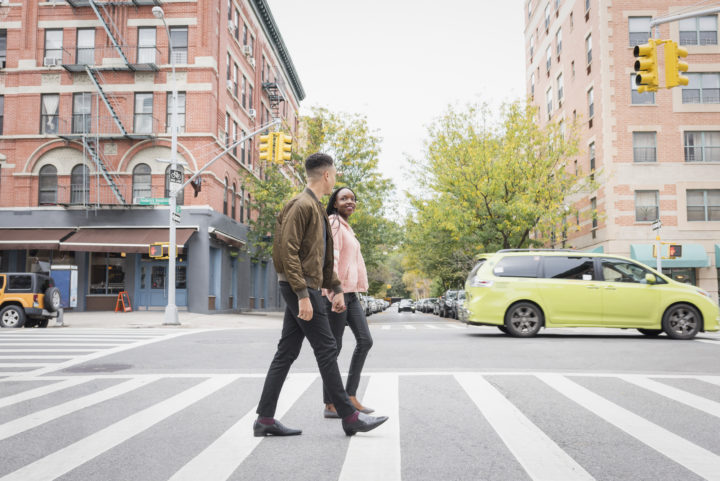
There are three chief benefits to exploring by foot, when you travel. The first is the most obvious- it’s great for exercise. The second is that it’s cost-effective. The third, arguably most compelling benefit, is being able to connect with the locals and the culture directly and at your own pace.
You can access that ‘off the beaten path’ area that might be off limits to bikes, scooters, and vehicles. If you’re going to walk for an extended period, or if you’ll be accessing streets that are unpaved, forgo the flip-flops for more comfortable footwear. Your feet will thank you.
Here are 7 great cities to explore on foot.
1. San Francisco
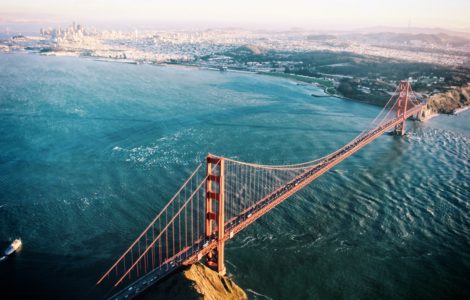
California is typically thought of as a car state, but it’s fun to explore San Francisco on foot. Just be sure to pace yourself when going up those infamous hills.
Go for a walk along The Embarcadero, where you’ll see the Ferry Building, Coit Tower (just opposite), Fisherman’s Wharf, and plenty of restaurants and shops. This area tends to be a draw for tourists on hot days, so be aware of that.
Head to The Golden Gate Bridge, which has designated lanes for pedestrians, cyclists, and vehicles, so nobody is on top of each other. Once you arrive in Sausalito across the water, be sure to stay as close to the side of the road as you can to avoid cars.
Love climbing stairs? San Francisco is home to three mosaic tile installations: 16th Avenue, Hidden Garden, and Lincoln Park, which amount to hundreds of steps. Not only are they beautiful works of art, they afford great views once you’ve reached the top, especially at sunset.
Definitely plan to get a taxi back home afterwards…..your legs will insist on it.

This vibrant city is mostly flat and separated into 20 districts called arrondissements, which all have their own, unique personality. The Marais, for example, occupies the 3rd and the 4th arrondissements, and is known for being the gay district.
Generally, the closer you are to the islands at the center of Paris (Île de la Cité and the Île Saint-Louis) the more expensive the real estate is.
Enjoy a nice cup of coffee while you walk by the Seine in the morning, and you can cross from the Right Bank to the Left via the many footbridges. It’s possible to go down to the walkways beside the Seine; the closest you can possibly get to it without swimming.
When you’re tired, Paris is well serviced by taxis and has a pretty reliable Metro system with stations everywhere.
3. New York City

So long as you can count, you’ll find New York City’s grid layout easy to navigate. But it gets trickier in the other boroughs (looking at you in particular, Queens) so Google Maps will be your savior.
The city that never sleeps constantly has something going on, especially in the areas known to be densely populated like Times Square, Herald Square, and Union Square.
There’s art installations, street fairs, street performances, and far more than you can possibly fit in one visit. Whether it’s 100 degrees out or there’s a snowstorm, the action doesn’t stop.
There are walkways on either side of Manhattan, where you can enjoy views of the East River and the Hudson River.
4. Barcelona
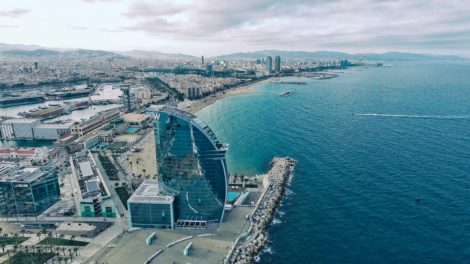
Barcelona offers several environments that are great for walking, it’s just a question of how much you want to be challenged.
Looking to be by shops? Las Ramblas is the city’s shopping artery. Like the beach? Head over to the boardwalk which runs along the Mediterranean. Like hills and history? You can walk up Montjuïc hill and see the castle of the same name.
If you’re looking for Barcelona’s answer to Central Park, Ciutadella Park is fantastic for walking, with its fountains, statues, and beautiful plants.

London manages to be of the 21st century, while still preserving its past, such as the imposing Tower of London and Big Ben, the clock tower next to the Houses of Parliament.
The South Bank is a great choice for those hoping to avoid tourists, and, as Condé Nast Traveler points out, “it is more atmospheric, spacious, and relaxed in the evening.”
London is also home to several green parks, including Regent’s Park, St. James Park, and the beautiful Hyde Park, with plenty of places to sit when you need a breather.
6. Amsterdam
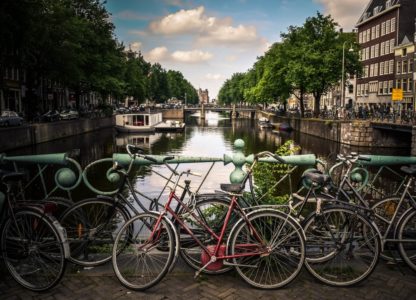
Amsterdam is the beating heart of The Netherlands, and is known for its liberal and tolerant attitude.
Bikes may be more popular than cars, so if you walk into a bike lane, even by accident, don’t be surprised if a cyclist angrily rings their bell at you. Pay attention to avoid collisions.
The main Red-Light District (you’ll find smaller ones in other cities like Utrecht) is infused with magic at night.
Stroll along the cobblestone streets, gaze at the canals, take in some live music, and dip into one of the cafés for a joint or some space cake. It’s best to have a companion with you if you’re trying these for the first time.
If you aren’t used to seeing scantily clad women in illuminated shop windows, you might be in for a shock. One of them might tap the glass to get your attention, and you’ll know she’s entertaining a client if her curtains are closed.

Rome is history in motion, with its old churches, statues, and piazzas teeming with tourists, especially in the summer.
Some top tourist sites include The Vatican (and its museum), The Pantheon, the Trevi Fountain (tourists throw in a coin for luck), The Spanish Steps, and the Borghese Gardens. Of this list, except for the Vatican Museum, you can absorb all of this rich history for free.
The Piazza Navona is one of the most famous squares in Rome, dating back to antiquity. It’s characterized by its elongated shape, a nod to its former function as a site for athletic competitions.
Subscribe to travel noire
Get more travel content
Subscribe to Travel Noire, a free daily newsletter that features the best of travel, destinations, and guides to the cities you love from a new point of view — yours.
By subscribing to this newsletter, you agree to our terms of service and privacy policy.
Popular posts
Trending stories in world travel
What are you looking for?
All the Travel Tips Moms May Need

Safety Tips When Traveling on Foot
Walking has always been a reliable source of transportation, but it’s no surprise that in today’s age we opt for the easier (faster) approach of travel. Although vehicles are massively useful tools to get us from point A to point B, recent history indicates a revival of traveling on foot.
More people are recognizing walking as a healthy, environmentally friendly way to get around and get in touch with their surroundings. Like any form of transportation, traveling on foot doesn’t come without risks, however. It’s important to have the proper knowledge to ensure your safety and not put yourself and others at risk of being harmed. Read on for safety tips when traveling on foot.
Know Where to Walk
The best places to walk are well-used hiking trails, such as those that run through parks. On these trails, there is no motor vehicle traffic to worry about. However, it isn’t often that the perfect trail will lead to where we need to go. If you must walk beside a roadway, make sure to stay facing traffic and stay on the same side of the road as oncoming vehicles. This lets you see cars as they are approaching and will give you time to take evasive actions if needed.
Dress Appropriately
Making yourself more visible to motorists helps keep you safe while walking near roadways. Make sure you wear brightly colored clothing so drivers are more likely to see you. At night, reflective clothing such as vests or belts make you easier to avoid in the dark. Also remember to dress for the weather you will be experiencing on your walk. Wear clothing that is sufficiently warm and pack rain gear if the weather is expected to be rough.
Know Your Limits
While walking is relaxing and economical, it can also be exhausting over long distances. If you’re planning a long trip, look for places where you can stop and rest along the way. Also, make sure you always have a bottle of water on hand and take drinks frequently while walking.
It’s possible to experience dehydration, heat sickness or even a heart attack during a long walk… especially in high heat or humidity. If you’re walking and start to feel ill, it’s probably best to stop, rest, and contact someone that can give you a ride the rest of the way.
Stay Aware of Your Surroundings
Not paying attention to your surroundings is just as dangerous while walking as it is while driving. Being distracted while walking can take your attention away from dangers such as traffic or tripping hazards. Refrain from texting or using a mobile device, and keep the volume low if you decide to listen to music.
Avoid Walking Alone
Always try to have a partner to walk with. Not only does this make the trip a more enjoyable experience, but it also decreases the risk of being confronted by a potentially dangerous individual. If you’re unable to have someone accompany you during your travels, always tell someone what route you’ll be taking to get there and what time you will be coming back.
While walking may not be very fast, it’s healthy, environmentally friendly and costs nothing. However, pedestrians are also the most vulnerable travelers on the road. Many of the potential dangers faced while walking can be avoided simply by paying attention to your surroundings, so being mindful of what’s around you goes a long way toward keeping you safe.
Related Posts

Safety Tips When Staying Away from Home

Safety Tips When Traveling by Airplane

Safety Tips When Taking a Road Trip
Leave a reply cancel reply.
Your email address will not be published. Required fields are marked *
Save my name, email, and website in this browser for the next time I comment.

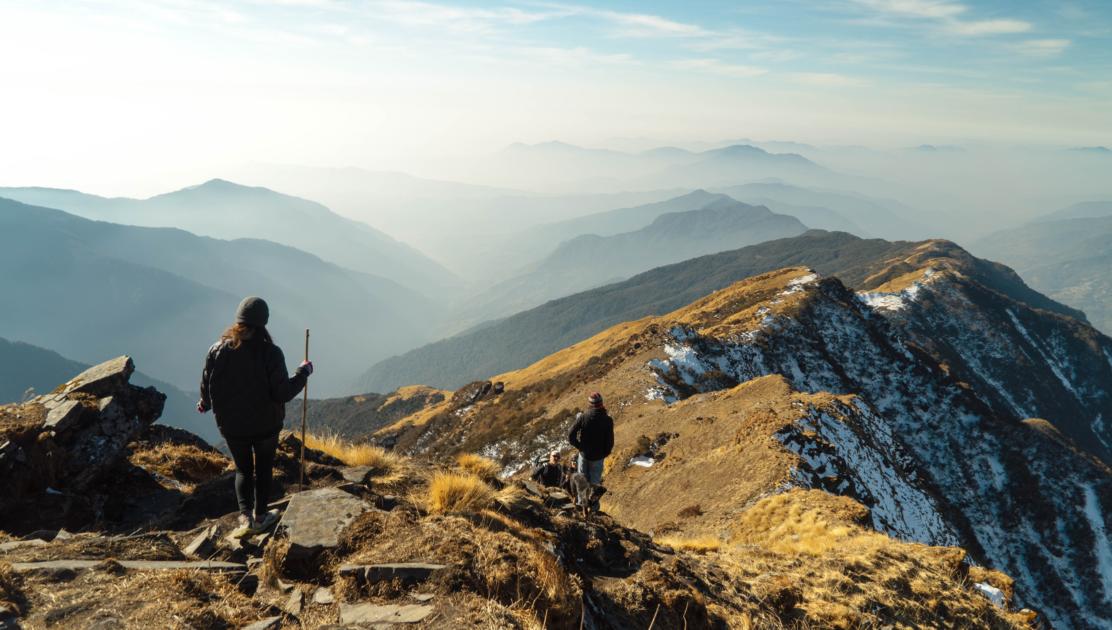
On the Virtues of Traveling by Foot
Walking in the natural world can be the catalyst for personal transformation.
The German filmmaker Werner Herzog once declared “tourism is sin, and travel on foot virtue.” He should know, having once walked all the way from Munich to Paris. His larger point here refers to the authenticity and primacy of physically experiencing and interacting with a place, in contrast to more passive and modern modes of travel. The faster we travel and the more separated we are from our surroundings, the less we can really know of them. We know little of a place traveling through it by car; on a bicycle, our experience broadens; and traveling on foot—one footstep at a time—we come to know a place both physically and intellectually. Traveling on foot can even be a sacred and holy act, as pilgrims from most religious faiths can attest. The means of traveling on foot—or in some cases, on one’s knees—over a long and arduous route are themselves an act of faith that is equally important as reaching the end, whatever that holy site or destination may be.
An idea central to the practice of T’ai Chi is rootedness , the strength and grounding of position that occurs when the body contacts the earth through the feet, establishing a kind of harmonious flow of energy, which is dynamically balanced by fluid movement of the body. Walking or hiking can likewise engage our bodies in a similar kind of kinesthetic experience and harmony with the place through which we are passing. The character of a place may come to us to a certain degree through our senses, but as adventurer and natural navigator Tristan Gooley has written, “We are more likely to understand where we have traveled if we walk it ourselves than if we are carried—even if we are deprived of all of our external senses.”
There is something about immersing oneself physically in a place, I have found, especially over time and across seasons. It yields fascinating insights into a place’s true nature, its unique character. I’ve just as often found, however, that walking in natural or wild places stimulates a kind of depth of thought and contemplation, that—regardless of whether or not it relates directly to the landscape—results in problems being solved, dark moods lifted, ideas elaborated on, thoughts developed. By moving on foot through a place, we undoubtedly come to know that place more intimately. But under the right conditions, free from the constant distractions of home, work, and social interaction, we may also come to know ourselves and our thoughts better.
The English word “discourse” is often used to describe the process of reasoning or logical development, however its Latin root, discurrere, literally means “to run about.” The concept of physical movement or progress giving rise to thought, contemplation, or intellectual development is also reflected elsewhere in common speech, for example, in the use of phrases like “reason through,” “think it over,” or “arrive at a solution.”
As someone who has spent considerable time running, hiking, and walking in the outdoors, I’ve often noticed that I solve more problems and find more inspirations moving about in the outdoors than sitting still at my desk, staring at a computer screen.
Before injuring my Achilles tendon last summer, on many mornings I would enjoy an early run up and down the steep, wooded hills of the Blue Ridge Parkway near my home. Whatever anxieties or concerns I had about the day ahead of me had usually vanished by the end of my six- or seven-mile run. If there was a specific problem or obstacle I was beset by, I would more often than not arrive at an answer or a strategy, if not a complete solution, by the end of the run. On these mornings, my mind was easily soothed by the rustic setting of this daily ritual: the relative absence of automobile traffic and human noise, the sounds of deer rustling through leaves, birdsong emanating from the heights, and hollows of these mostly sylvan surroundings. Even as the route became familiar to me, the daily differences in the subtleties and nuances of light and sound, the changes in temperature, vegetation and wildlife activity were never lost to my attention. On the contrary, they were the energizing catalyst each day for novel thought and inspiration.
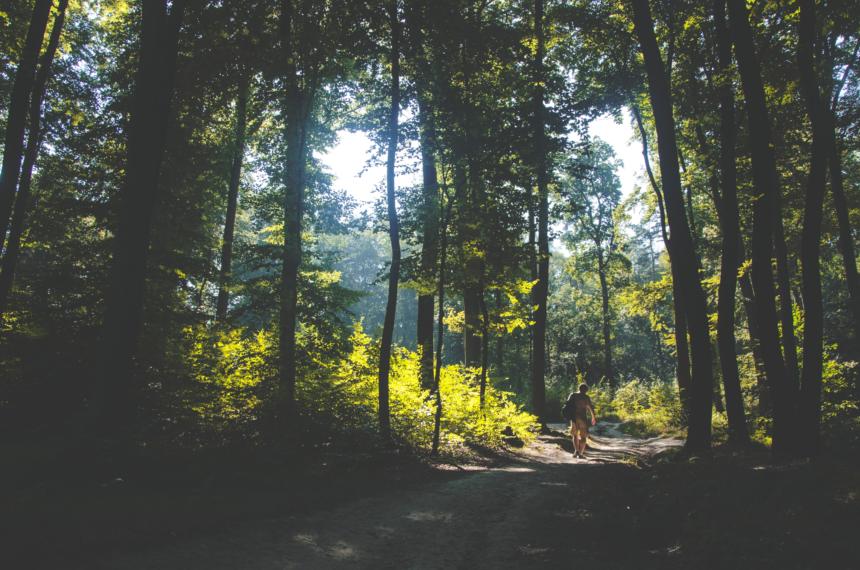
In an effort to rehabilitate my injured foot over the summer, and now lacking a regular job commitment, I decided to spend a day each week doing a long hike in the area to compensate both for the lack of physical activity and the lack of time spent in the spectacular natural world of the Blue Ridge, lost to taking a break from running. As June turned to July, I spent many hours wandering nearby trails, particularly sections of the Mountains-to-Sea Trail, a thousand-mile trail that stretches through the Blue Ridge Mountains of North Carolina before it doglegs across the state to the Outer Banks and the Atlantic Ocean. Later in the summer, I explored other destinations a little further afield in Virginia, like Rock Castle Gorge or Grayson Highlands and Mount Rogers, Virginia’s highest peak.
Even during the summer months, however, I saw relatively few other hikers on the more remote sections of these trails and was often left to myself to wander for hours, with nothing but my own thoughts and the cadence of my feet on the trail. Sometimes my thoughts would be focused outward, in tune with the majestic beauty of blue-green peaks stretching away along the horizon of the high country; or the wild flowers lining the path at my feet as it stretched across an alpine meadow. Other times my thoughts drew inwards, as I contemplated a writing project in progress or waxed philosophical about the state of the world. Usually though, over the four or five hours it would take me to do a medium-distance hike, my mind and emotions shifted over a range of thoughts and sensations. At the end of each hike, I found myself physically tired, though never too exhausted. More importantly though, something in me, some deeply human need that transcends the spiritual, emotional, intellectual and physical domains, was satisfied by this time spent alone with my thoughts, ranging across mountainous landscapes, a day at a time.
As much as these weekly rambles changed me in whatever small degree, I have often wondered what it would be like to spend a whole season or the better part of a year traveling by foot. To through-hike the Mountains-to-Sea Trail, or more ambitiously, the Pacific Crest Trail or the Continental Divide Trail, would surely be an unforgettable and life-changing experience, albeit one that many, myself currently included, are not likely to find the time and resources to accomplish. Fortunately, others who have walked or hiked long distances overland have documented their experiences in what some have called “the literature of the leg.” Though this genre is nothing new, I’ve found myself recently living vicariously through the wanderings of several contemporary author-travelers who have undertaken major journeys on foot.
One such writer is blogger and long-distance hiker Carrot Quinn, who has hiked the Pacific Crest Trail in its entirety twice, as well as the Continental Divide Trail and the Hayduke Trail. Quinn’s book, Thru-Hiking Will Break Your Heart, compiles her blog entries from her 156-day traversal of the trail in 2013. The trail begins in the desert at the US-Mexico border and ends at the Canadian border, following the mountainous spine of the high desert, the Sierra Nevada, and the Cascades from south to north. Throughout the book, the reader experiences firsthand the trials and travails of a novice long-distance hiker as she crosses the country that is molding and challenging her body through its extremes of weather and terrain while also flooding her senses with light, wind, and heartbreaking natural beauty. Quinn’s emotional state sometimes mirrors the terrain of the 2668-mile trail: snow covered granite peaks of rapture alternate with deserts of despair and flood-choked valleys of uncertainty, followed by the routine “zero” days in a trailside town, recovering from the exhaustion of trail life. By the end of the journey, though, one is left with a shared sense of loss, of not wanting the trail to end. The reader catches more than a glimpse of just how much trail life—the camaraderie of fellow hikers, and the sheer, gorgeous sublimity of hiking through some of America’s most beautiful country—has changed the author.
Similarly, Nick Hunt’s Walking the Woods and the Water details a journey he made, beginning in December 2011 to retrace the footsteps of Patrick Leigh Fermor, a fellow Englishman, who walked from the Hook of Holland to Turkey’s Golden Horn in 1933. While some of this journey crosses urban and suburban lands, especially in its earlier segments, many of the experiences of people and places Hunt documents could only occur on foot—for example, sleeping in the ruins of an ancient castle along the Rhine River in Germany, or bedding down for the night in a shed while a snowstorm rages outside. As Hunt’s book chronicles his own experiences and the personal changes he undergoes in the seven-month journey, he is also comparing his present-day experience of the lands and people he encounters with Fermor’s account of seventy-eight years earlier and registering the changes, for better or worse, as he notices them. As with Carrot Quinn’s book, one can’t help but feel transformed at the end of this immense yet humble journey across not just the enormity of a continent, but through three seasons and dozens of separate cultures and regions and climates.
Jennifer Stitt, in her recent essay on walking, focuses on the moral clarity that resulted from Thoreau’s solitary walks in the wild and the American civil rights movement as well as past and current freedom movements his thought influenced. A solitary and thoughtful walk in nature here culminates with the mass marches and mobilizations that have brought about deep change and lasting social justice in our time. As I have found also, a solitary walk, especially in the wild, can bring inner peace, wonderful moments of intellectual and visionary clarity, and personal transformation as we physically, spiritually, and intellectually connect with the natural world, which supports us and from which we have evolved. From this position, ecological justice is also possible.
Matt Miles is a writer, poet, permaculturist, maker, and rock climber. His work has previously appeared in Dark Mountain . He lives in the Blue Ridge Mountains of North Carolina where he and Tasha Greer run the reLuxe Ranch, a whole systems farmstead.
Photos courtesy of Unsplash
Related Articles
Attuning to the natural simplicity of life, pathways to planetary health forum: edward norton & jonathan f.p. rose, meditation on the high line, leave a reply cancel reply.
Your email address will not be published. Required fields are marked *
This site uses Akismet to reduce spam. Learn how your comment data is processed .
The Fox Magazine
- Why Leaders Must Be The Inspiration
- Proceed as if success is inevitable.
- Practice the skills you learn. Apply yourself to the basics and surround yourself with like-minded people.
- If hate wasn’t possible it would make love that much easier.
- Focus on simply doing things with love.
- Food speaks a universal language.
- Visualize your way to the top and be willing to put in the work for your business.
- If you wait for something that inspires you, you could be waiting for years. The solution is just to start working.
- Travel is the fast-track to the university of life.
- There is no reason why we have to be cookie cutter versions of who we are.
- If you work at it, you’re only bound to grow.
- Work for your dreams.
- It’s a real skill to stay optimistic and persevere no matter which obstacles come across your way.
- I truly believe that we can be, do and have anything we want when it’s aligned with our passions and we take action.
- We tend to forget about what’s on our doorstep and sometimes all it takes is a few hours in a car or on a train to discover a new, beautiful place.
- The best thing you can do is keep shooting.
- Listen to advice, but listen closer to yourself.
- The freedom to be able to think of anything and turn it into a reality is very inspiring.
- it’s important to try everything, you won’t know what kind of photographer you are until you try it.
- Leave the busy-ness and monotony of everyday life behind, get rid of our barriers, and experience every moment to its fullest.
- There won’t be another photographer like you.
- Don’t be afraid for people to see your weaknesses – flaws make us human and most artists, and people, are not perfect.
- It’s not about having time. It’s about making time.
- Photography helps us focus on the world around us.
- Just do you and give people something interesting to talk about.
- Everything that’s worthwhile takes effort and devotion.
- Use your talent to express what you sometimes can’t do with words, just know that it takes time and patience.
- There’s always another adventure around the corner.
- Creativity can solve anything, you just need to be willing and open-minded. The rest will follow.
- Don’t try to be perfect; just try your best.
- Pursue passions with reckless abandonment.
- Sometimes as artists, we feel trapped. So, free your mind. It’s time to go.
- Travel promotes new outlooks, helps you build character, and gives you incredible experiences that can change your life.
- Stand out by being true to yourself and authentic to your craft.
- Stay relevant by constantly evolving, growing, and changing to do better.
- Gain inspiration from those around you but never let them bring you down.
- Learn the business and don’t burn bridges.
- Keep your niche original but don’t stop evolving, don’t copy other people and keep your aesthetic on check.
- The best part of photography is the opportunity to spend time outside without an agenda.
- Realize your potential and understand that the blueprint for success is your own passion for what you want to do.
- The biggest hurdle is beginning.
- The best things in life are placed just beyond terror.
- Don’t let other people’s opinions affect your decisions, do whatever you feel and make what you want to hear.
- Success is helping people achieve their goals.
- Stay true to yourself and your audience.
- Travel inspires photography.
- The strongest and most motivational people are around you when going to work or the store every day.
- Stay authentic, inspired, and driven.
- There’s always another adventure around the corner.
- The best photo is the one you’ll take tomorrow.
- You can’t just like it, you have to love it.
- Create your own style and identity. Leave your own unique mark in this world.
- Fashion is the best version of you.
- True success is a ripple effect into areas beyond your reach.
- Photography has a start, but there is no end. There always is and forever will be room for self-improvement in photography.
- You can create the best things when you are pushed to think outside the box.
- A great creative needs to understand the tools of creation.
- It’s all about continuously working, creating, and improving.
- Find inspiration in all things.
- Food can inspire people to live a healthier life.
- Never stop creating, whether it’s paid or not.
- Life is more fun when you can break out from your comfort zone and dabble into a life of uncertainty.
- Photography gives you that platform to showcase your voice to the world in a visual way.
- Real life is so beautiful and the inspiration to be found there is so abundant and endless.
- Through food, we have the ability to taste tradition.
- Be real. Be raw. Be original.
- Discipline determines your destiny.
- The bigger the sacrifice the better the reward.
- Traveling is the best education and it always broadens one’s horizon.
- It’s about capturing moments that are gone forever.
- Belief is a compass to help you navigate hardships along your path.
- Even if it’s not obvious at the time, every experience plays a role in making the next project a success.
- Believe in your work and it’ll speak back to you.
- Photography if done right can show us how similar we are as humans, no matter where we’re from.
- Everything around us can become a source of inspiration.
- With the right time-management tactics, intensity and vision – you can do it all.
- Some people ride waves, others create waves, you decide what type of person you want to be.
- Money will grow back, memories will not.
- We acquire the strength we have overcome.
- Present your best self. When people don’t know you, you can always be who you want to be.
- Always remember the best camera you have is the one you have on you.
- If you’re not haunted by something, as by a dream, a vision, or a memory, which are involuntary, you’re not interested or even involved.
- Keep your niche original but don’t stop evolving, don’t copy other people and keep your aesthetic on check.
- No one else can be you and that is a beautiful thing.
- Most importantly, go after your dreams no matter what it takes.
- Photographing the world means always bringing a camera.
- Vision is like a foreign language and photography is the translation.
- Leave your own unique mark in this world.
- Find a good balance between consistency but also “thinking out of the box”.
- Good photographers take photos, great photographers make the photos.
- The biggest hurdle is beginning. Try not to think of everything at once!
- Just keep creating.
- Understand your strengths and weaknesses.
- Learn what you like and don’t like.
- Stretching, training and challenging your brain is just as doing the same for your body.
- Do whatever you feel and make whatever you want to hear.
- You can be selfish – do what you want.
- There is a lot of technical “right and wrong” ways to do things, but at the end of the day it’s your art.
- You can’t make great progress all at once.
- It’s really all about having interest in what you do.
- Have passion for your work and compassion for all human beings.
- Don’t waste your time or time will waste you.
- In leaving what you know, there’s the chance to live free from judgement.
- Don’t rush art. Don’t rush life.
- Success is using technology to contribute to a healthier, more informed society.
- Cooking at its core is comprehensive meditation with the assurance of a good, healthy meal as the reward.
- You are manipulating your own reality and capturing it to show to the world in your own interpretation.
- Doing what you like is freedom. Liking what you do is happiness.
- This is a fun journey, but plenty of work at all times.
- Change the hearts and minds of those who feel that destruction is greater than creation.
- There is beauty in the present moment.
- Strip free of belongings; you don’t realize how much belongings weigh you down until you free yourself of them.
- Our family of four from Australia has a deep love of America and a willingness to explore and share that with our global online community that extends into the millions.
- When I travel, I look to be comfortable and feel attended wherever I go.
- I get the biggest kick out of empowering others by turning them on to the healthy, affordable, diverse and delicious dishes they can make for themselves!
- Traveling made me realize just how vast the world is, and gave me a much better perspective of life.
- Remove yourself from family and friends because when people expect you to be who you always were, there’s little room to grow and change.
- Traveling has taught me to take things day by day.
- Being That Adventurer is all about going off the beaten path, living with locals and discovering the real side of a country.
- Let your smile change the world, but don’t let the world change your smile.
- There are some things you learn best in calm, and some in storm.
Dream Bigger With Us.
Let's get social, 6 reasons why you should travel the world by foot.
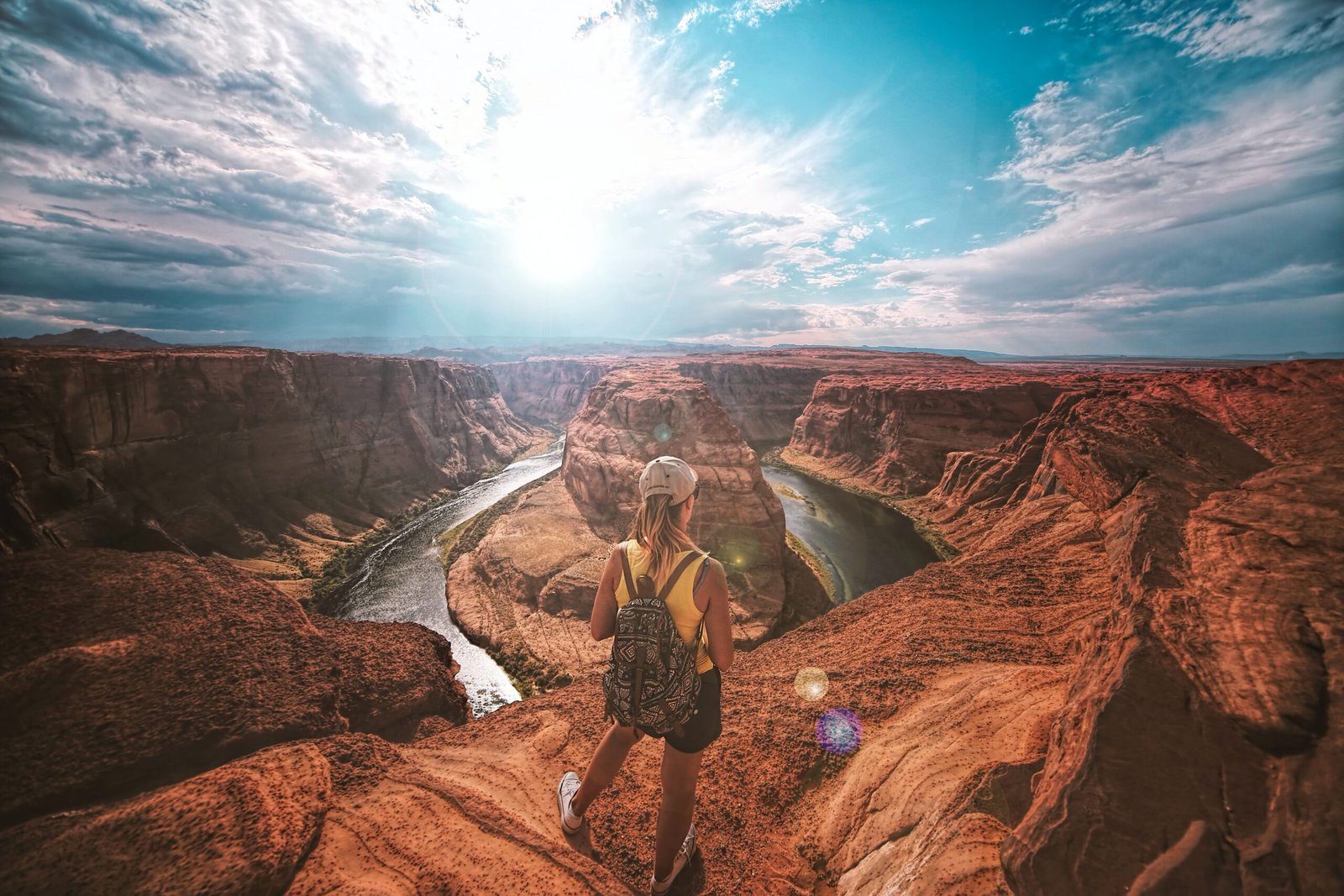
In the beginning, people only traveled by foot, but since technology facilitated going from one place to another by automobile, it’s less common to walk longer distances.
However, traveling by foot has its appeal and should be done more often since it can benefit your health and teach you a few things about our environment. So, let’s see why you should consider this type of traveling.
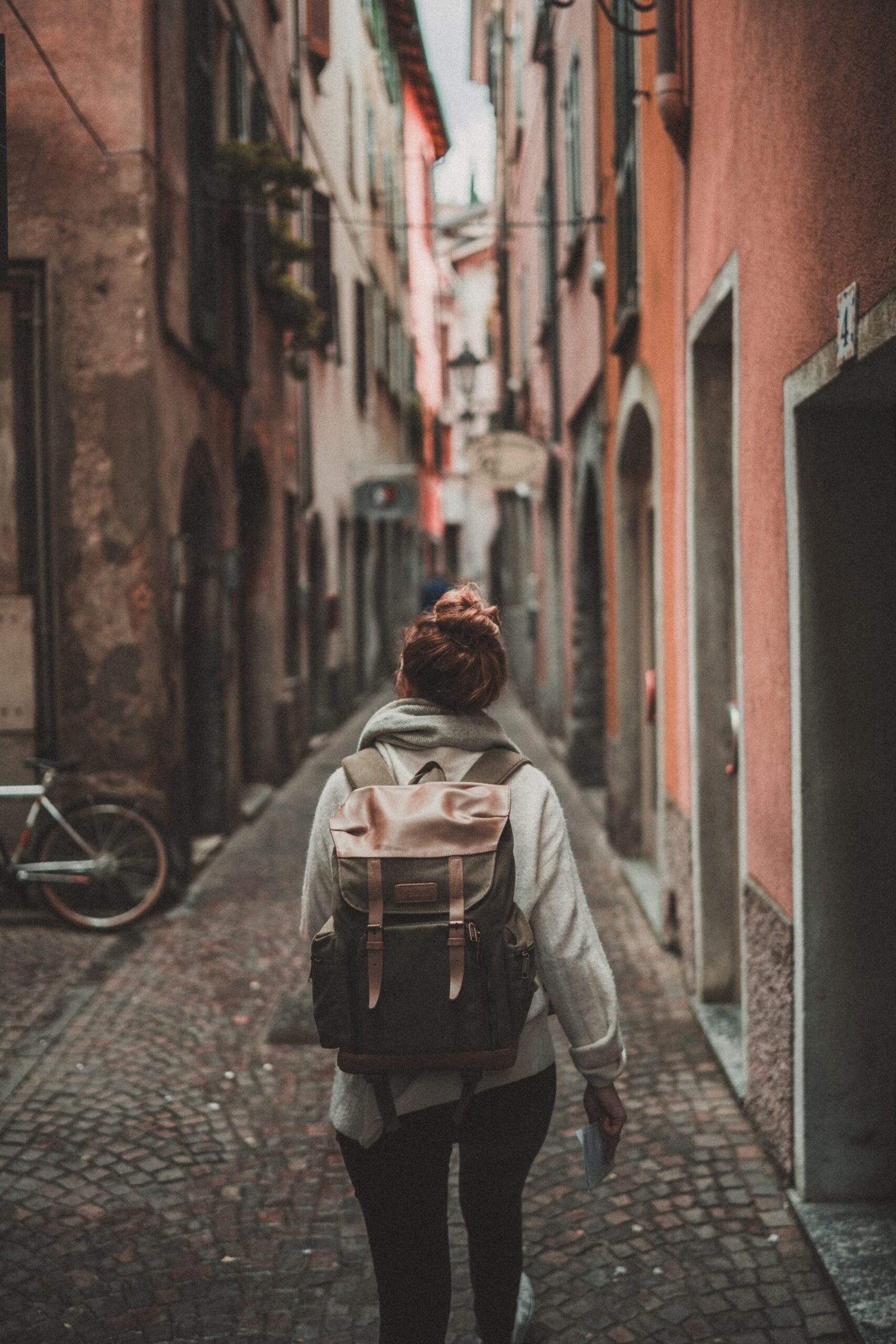
You discover new things
Traveling by car or bus can be easier and faster, but you miss out on a lot of interesting things since you can’t just stop whenever you see a rare animal or beautiful scenery. But walking at any pace allows you to observe plants, animals, birds, and any other unusual things on the road. It’s a more authentic way to travel as it lets you get a more personal insight into your surroundings.
For example, traveling on foot from village to village will reveal some things that you can’t find on the map or the internet because they’re hidden from the technological world. You may discover small lakes and untouched parts that are extremely beautiful and worth seeing. You could also get in touch with locals and learn more about the village, which will make you more culturally rich.
You save money
Traveling on foot only requires you to wear proper shoes and clothes to be able to walk and not freeze. The equipment is relatively limited (a backpack, food, and some money), and the accommodation in such places is often very affordable. However, depending on the trail you’re going to take, you might need more supplies to survive and have a smooth adventure.
Still, not all trails are easy and inexpensive. For example, if you’re interested in mountain hiking, you may need to invest in pricey equipment to ensure safety. You need to be dressed in layers, wear a specific type of footwear and carry accessories that are facilitating your trip (trekking poles, a signaling mirror, and a first-aid kit). However, most of the time, you don’t need to invest too much in practicing walking as a sport or a hobby. Therefore, you’ll save money to spend on more trips for accommodation, food, or souvenirs.
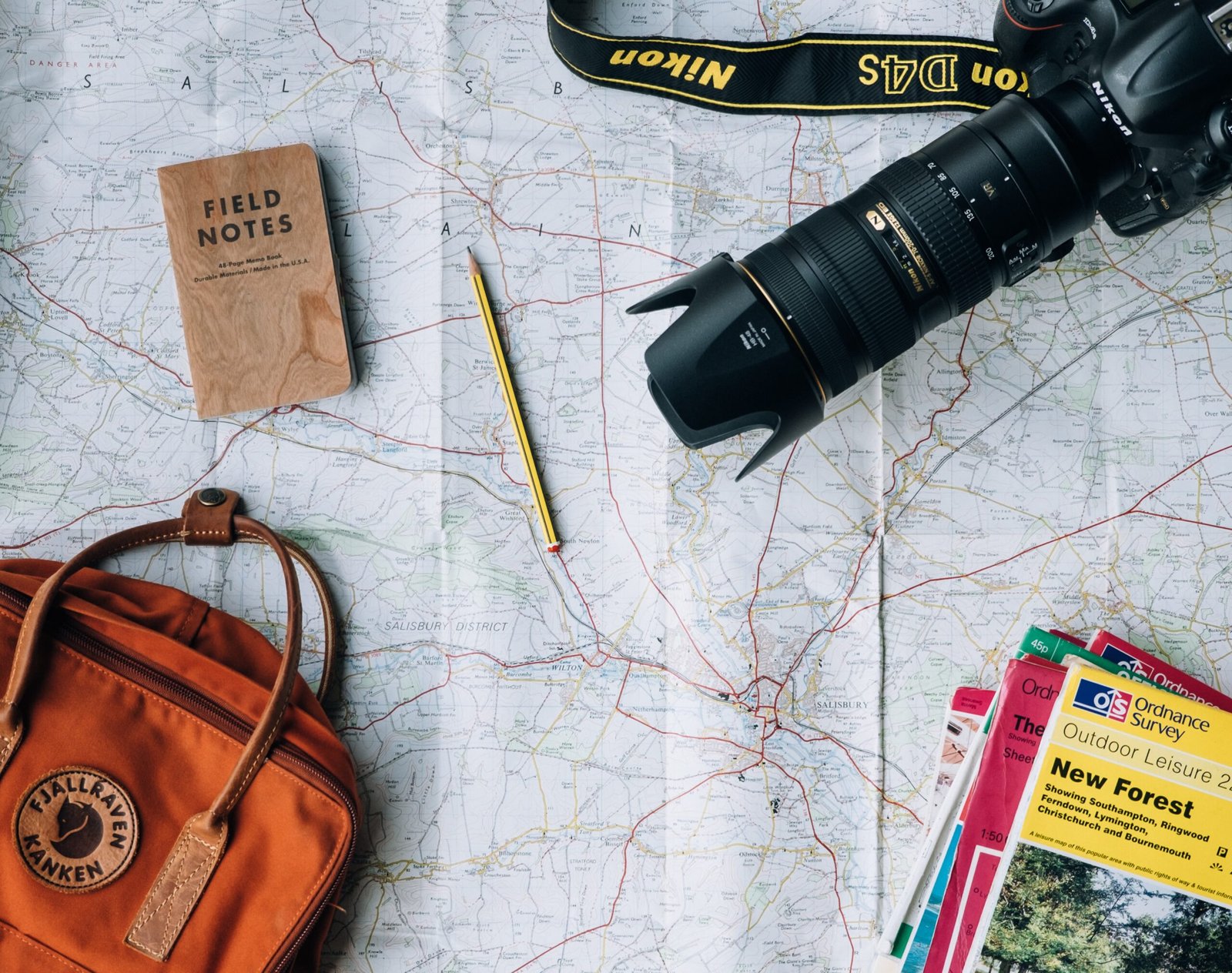
You get healthier
Going out in nature, walking, and feeling the fresh air can significantly impact your body. Not only you’re training your muscles and building up resistance, but also improving your overall health by:
- Losing body fat;
- Preventing various conditions like heart disease;
- Increasing energy levels;
- Strengthening your immune system;
However, to maintain your health, you need to be wary of your surroundings. Many traveling routes are around roads where cars usually speed up. Although road accidents have decreased in the past decade, a worrying number of people are getting hit by drunk or negligent drivers. But if you’re walking somewhere in the British trails and you’re the victim of a road accident, you can claim compensation in the UK to cover for any grave injuries.
You find yourself
Long-distance walking is one of the most remarkable cures for making you feel better. Spending some time with yourself while being surrounded by only nature can help you:
- Be happier and less stressed. Travelling can make you more relaxed since you’re doing something you love;
- Reinvent yourself. Walking in unknown places can be challenging, which requires you to think outside of the box and learn new things about yourself;
- Become more mentally resilient. Traveling forces you to adapt quickly to any type of environment you find yourself discovering, which makes you emotionally strong;
- Be more creative. Travelling promotes cognitive flexibility , which, in the long term, can help you thrive at work and in your personal life;
Walking on foot also makes you more thoughtful as you have plenty of time to analyze your life, choices, and opportunities. If you like doing introspection from time to time through journalling, for example, walking has the same benefits.
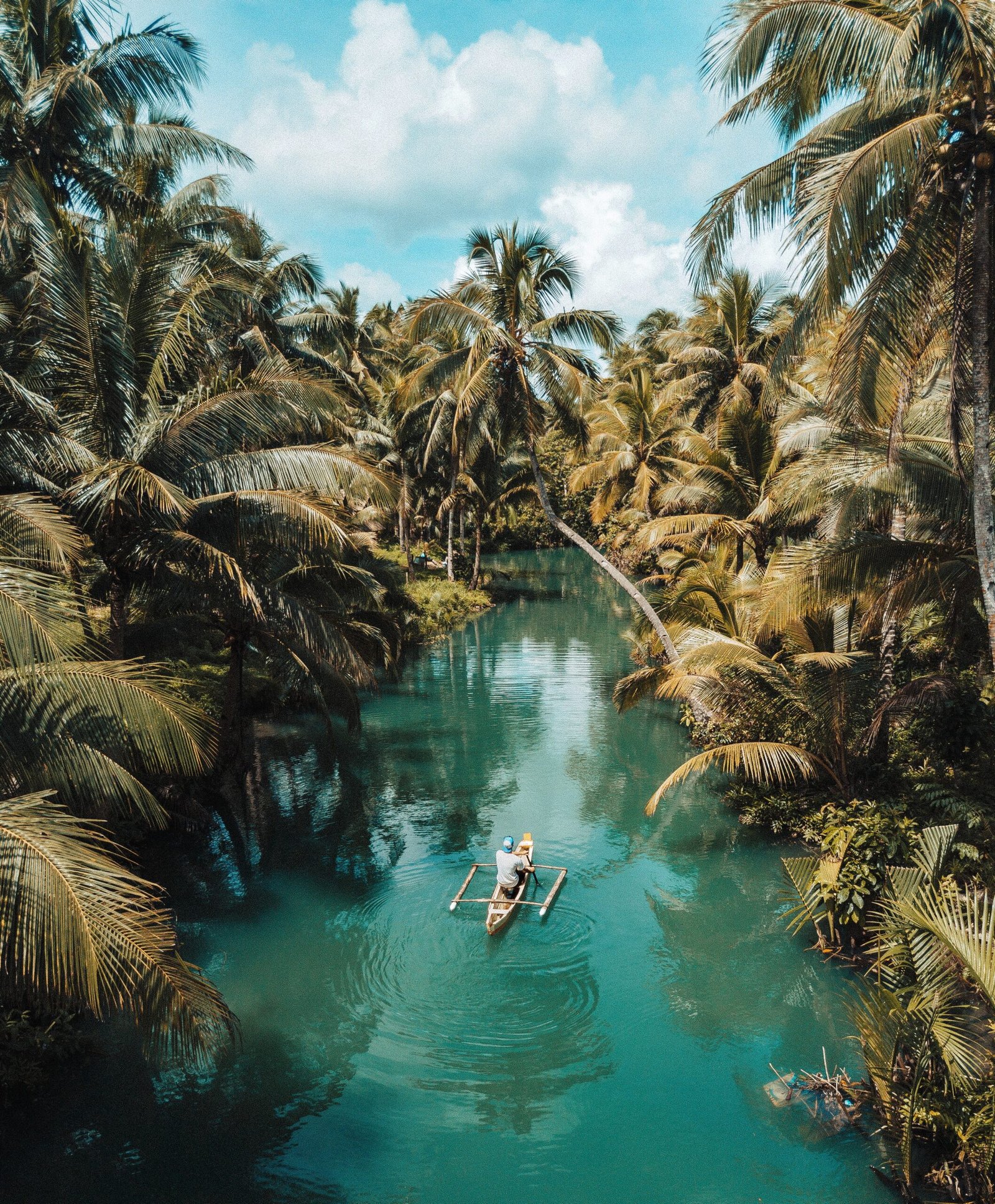
You’ll be more self-aware
Self-awareness allows you to live life in the moment and be present, which is a trait that people lack more since they’re taken over technology. Being self-aware makes you:
- Be intentional about something that needs to be changed in your life;
- Think differently in your day-to-day life;
- Build skills faster and more profoundly;
- Change the context of your life if it doesn’t suit your needs;
Nature is the only place where you can become self-aware by yourself. Traveling by foot allows you to connect with your roots and truly learn who you are. In time, you’ll learn to embrace who you really are and get into a free mindset. Walking will be your escape from the problems you face every day, and you’ll know how to deal with them more manageably than before.
You’ll learn more about nature
Although we have nature surrounding us, we know so little of it since we avoid going out there by ourselves. But walking on foot will give you enough time to analyze the trees, flowers, and different plants, and you’ll learn about their importance and be able to pick up nature’s features on the go. Therefore, as you understand why the environment is so important to sustain life, you can protect wildlife more.
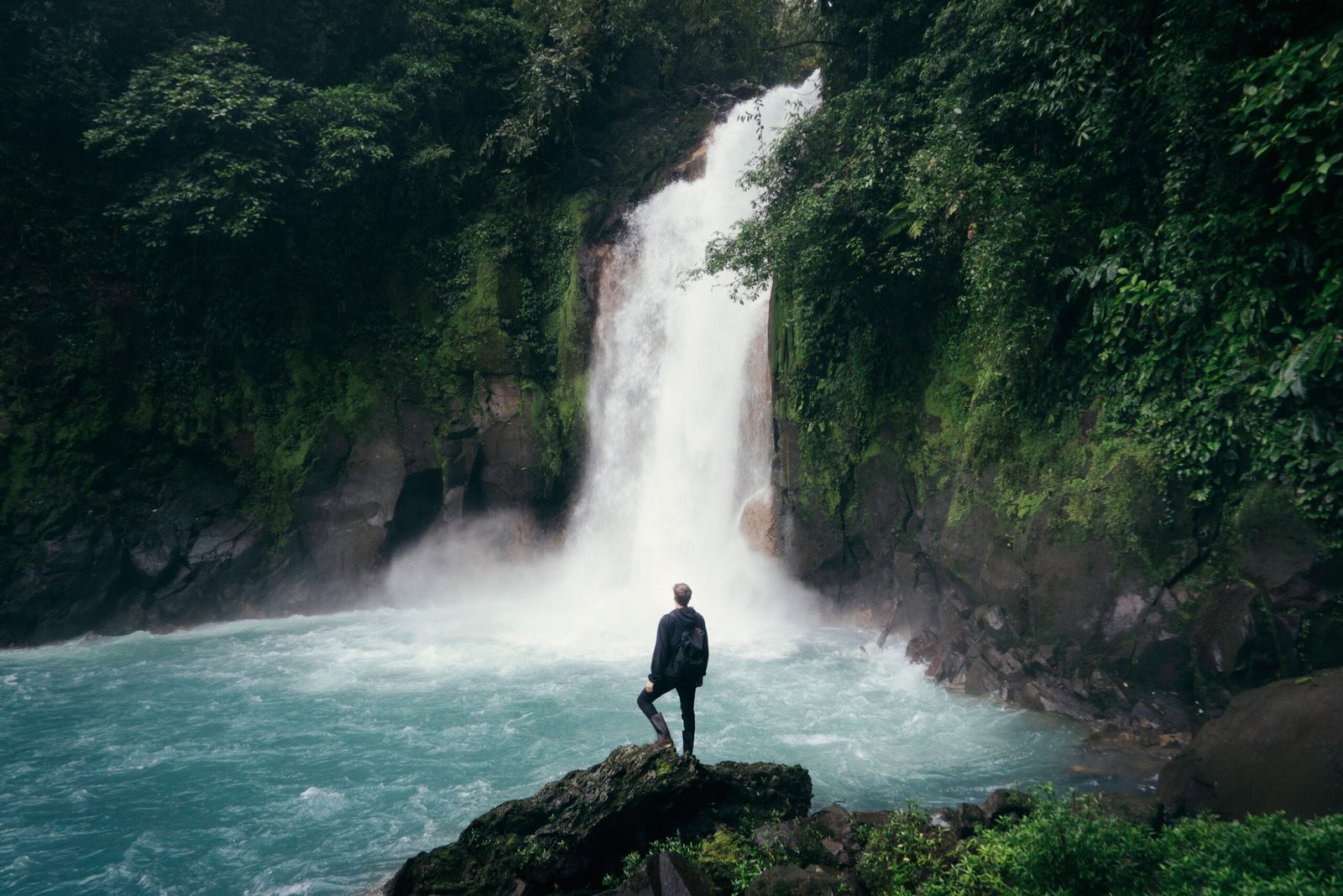
Learning more will make you more aware of the action you do every day regarding waste, so you can be one of the people who do little things to protect the trees and the plants around them. You’ll be more careful where you dispose of your waste next time and know how to report a plant to save its life. You might also love being surrounded by plants, so you’ll get as many plants as possible to decorate your house.
Wrapping up
Walking on foot is one of the most relaxing activities you can think of to unwind. But besides that, it has many benefits, like increasing resistance and boosting your mental health. Walking also allows you to explore nature and learn more about it, so it’s an inexpensive and easy thing to do in your free time.

For the most part, planning your trip will depend on the area you want to explore, and you should take that into account. On this site https://www.discoverybit.com/ you can find the best destinations for this.
Post a Comment
6 reasons why you sh….
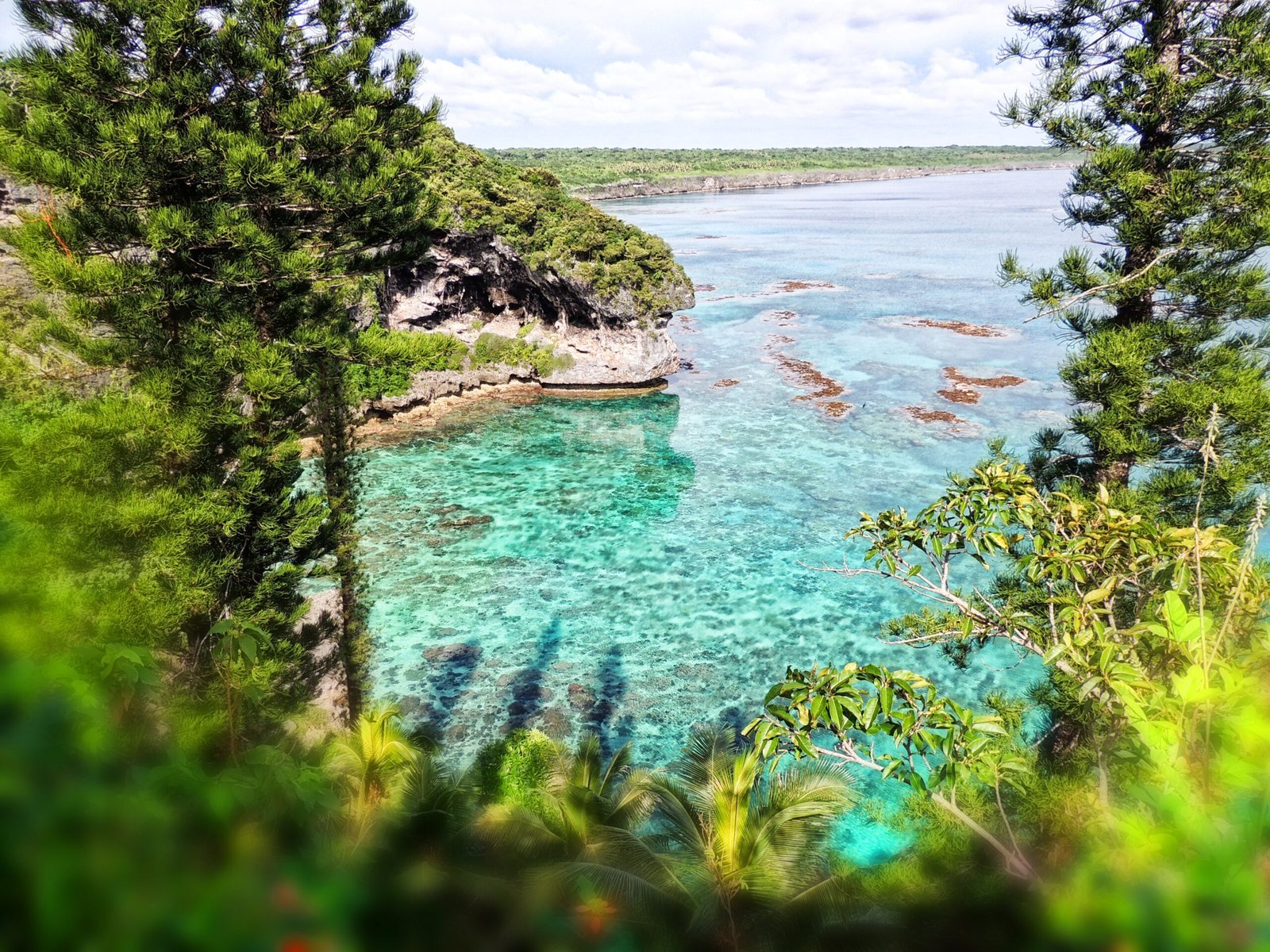
TRAVELING ON FOOT
By now you could read articles about various alternative means of transportation such as hitchhiking (even from a female perspective ), cycling , and boat-hitchhiking , and now it’s time for something simplest – traveling on foot.
As I traveled on foot just when I was looking for a place to start hitchhiking, I asked an experienced walker, my friend Goran, to share with us his experiences, which he gathered while traveling over 2,000 kilometres, relying solely on his feet.
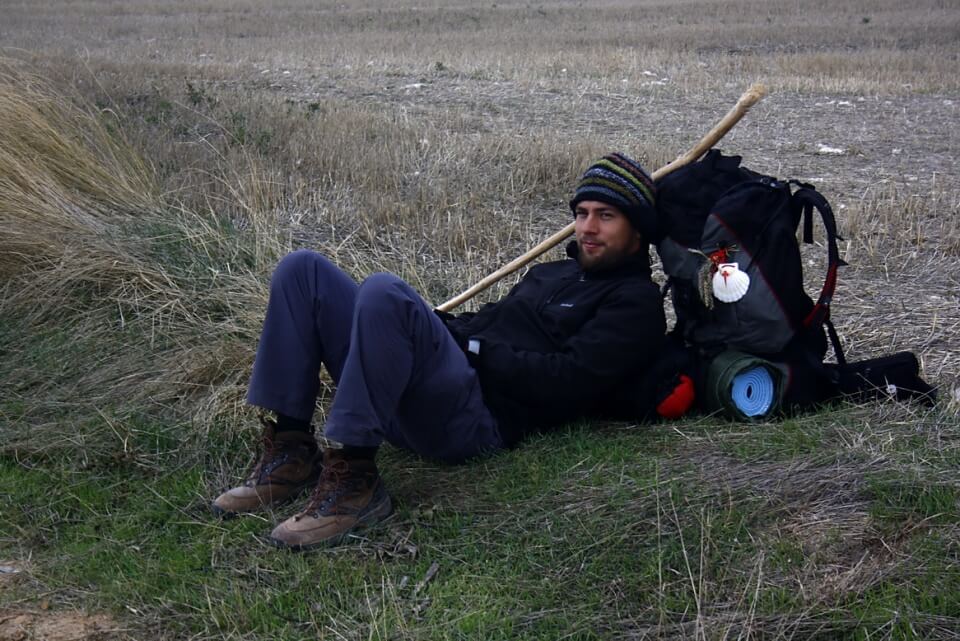
Among all the ways in which one can move around and discover the world, walking as a way of travel still raises suspicion in most people. Two or three generations of automated vehicles were enough to make our understanding of movement without a car, train or plane – unthinkable. The modernization of society, bustling lifestyle and technology development determined the speed of our lives to such an extent that living without means of transport seems impossible.
The journey on foot offers a choice to taste and dive into the enjoyment of the whole experience of moving from one point to another, unlike other common forms of travel that offer only pleasure coming from one point and going to another.
Nimble driver is the one who knows how to predict events that occur on the road. A large stone jutting, cliff on a curvy road, fallen branches from the nearby woods awake a sense of caution. He has to be careful and develop a sense of distance of his vehicle from the reality in which it moves.
Unlike a driver who during the journey has to take care not to collide with the surrounding environment, walker can slowly discover the same environment. He slowly approaches the jutting rock, watches it and thinks about how it came there. Walker enjoys a view of the winding road and easily avoids the fallen branches because he has time to notice and feel the space between himself and obstacles.
It has long been normal to go hiking for several days. Then it became fashionable notion of “trekking” which moved walking out of the mountains and introduced it in many other areas and thus walking evolved as a way of travel. By itself, the journey on foot is no art. Everyone can walk, its enough to open the door of the house and leave. However, to do it in a good and a safe way it is important to determine the purpose of the trip, to ensure that we will bring everything we need and possibly consider where we will sleep during every night.
The body is our most important ally in this endeavor. If we don’t look after it, force him carelessly or neglect its signs, in a few days it can turn into our greatest torment and reason for the cancellation. So it would be desirable to practice and strengthen it before traveling. A little running during the week, weekend hiking and exercise before going to sleep – all that should be enough for most of the people to achieve some kind of preparation for traveling on foot.
How far should we walk on a daily basis depends on our individual decision. Everything depends on our desire, order and time that you have available. Natural speed of walking is five to six kilometres per hour. However, because of the weight you carry, as well as fatigue, it falls on three km/h. So it would be best that you start with 20 to 25 kilometres a day and slowly increase up to 30-35, depending on you own possibilities.
I personally believe that the best thing that walking provides – is a sense of freedom.
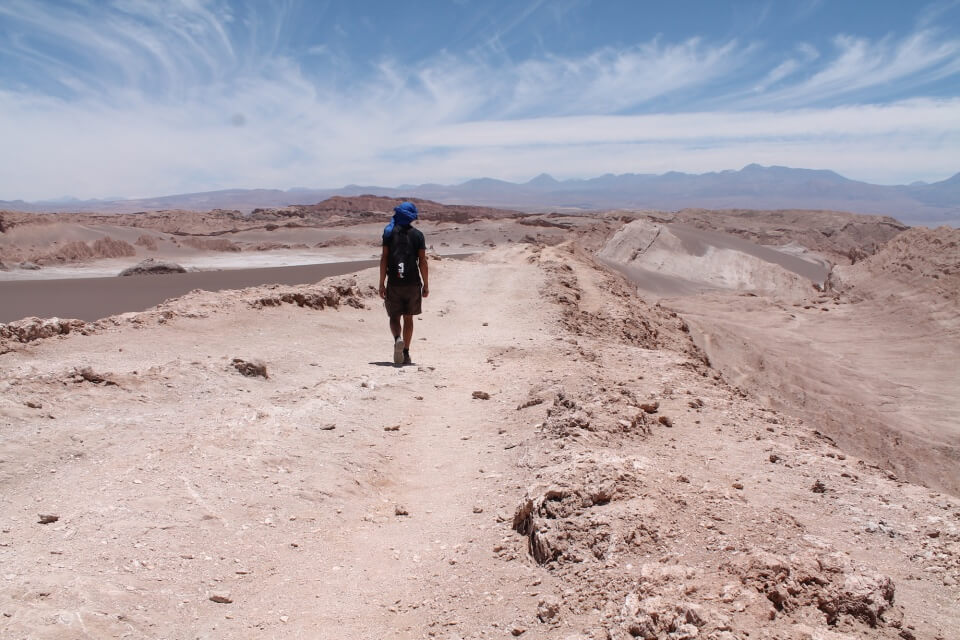
It is hard to expect experiencing such a feeling if our body is tired, sore and shocked by the experience we forced him on. Our mind doesn’t enjoy it. Our joy and enthusiasm are falling and there is a big chance of giving up by the second or the third day. It is therefore necessary to prepare the body before the trip so it is accustomed to the daily efforts, and train the mind to accept the same.
One of the most important things about traveling on foot is to wisely prepare your backpack. What we need depends on our needs, habits and preferences. The amount and range of things that will be found in our backpack depends also on the geographical area in which we walk and what the area offers. Are there shelters and villages on our way where we can spend the night? What we eat and how we cook food? Seasons and climatic conditions of the area are going through a great influence on compiling a list of the things you need.
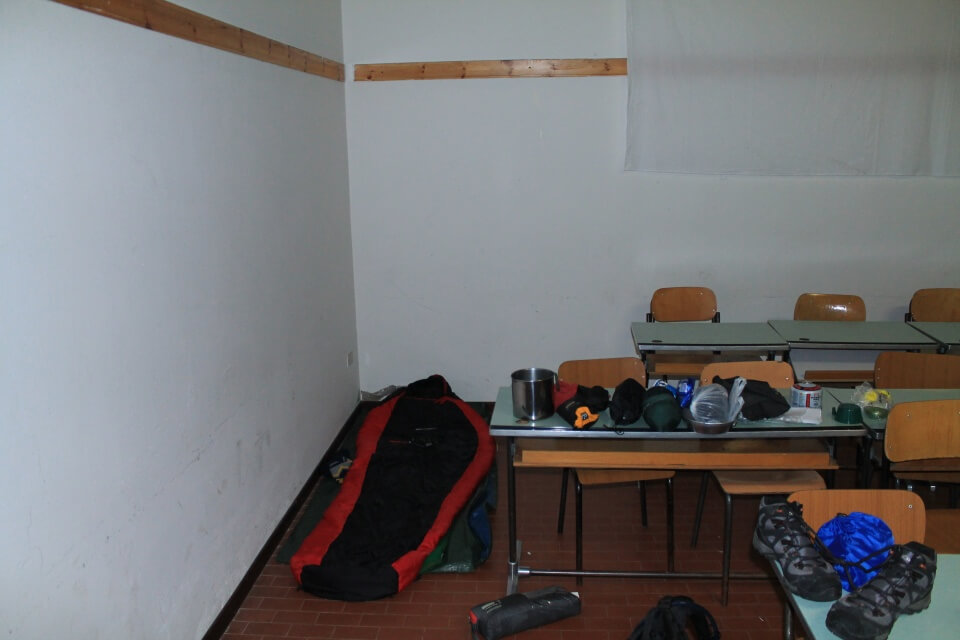
Perfect prepared backpack is difficult to achieve at first and it takes a few trips to figure out what we need. Take into account the fact that we have to carry every gram that we put in a backpack. And our shoulders feel very differently if we pack a little lighter.
Perfect backpack volume should be 45-60 litres. My backpack while traveling with all necessities mainly weighs 12 kilograms. It contains: a sleeping bag whose weight depends on the season; gas stove, Swiss Army knife, cups, spoons and forks, pot, small frying pan (which by the way I use as a plate and a cover); two pairs of trousers, one in which I walk, and the other one to sleep and for the time after walking, two or three thin T-shirts (preferably fast-drying) in which I walk and sleep; three pairs of socks, one for sleeping if it’s cold and two that I wear and wash alternately (always buy quality socks without seams); one warm shirt, jacket if its winter. Make sure you have a raincoat that is transferred over the backpack. Since we have to keep our backpacks dry during the rain, it would be good to have a cover for a backpack that gives additional protection. If you are on the road that does not offer accommodation, tent and sleeping pad belong to the mandatory equipment. Several meters of rope that we use for drying clothes after washing. There are also two small quick-drying towels and toiletries, toilet paper and headlamp. Aluminum foil pouch and first aid in case of need – it can save your life. Since the preparation of backpacks varies from individual to individual, some carry a laptop, camera, journal, a blanket, walking sticks, candles, books, GPS, MP3, an instrument, etc.
While traveling like this, sleeping besides the road is inevitable. The existence of safe shelters and accommodation makes it easier. As we walk, two things may create additional burden – the question “I’m on the right track” and “where will I sleep tonight”. If we walk Spanish Camino de Santiago, its not likely to have any of those doubts. The walker is in great marked route which offers accommodation at the end of each section. Walking in such a way offers the possibility of complete merging with walking and with yourself.
But, simple desire to walk and connect two points on the map provides different travel experience. You design the routes to figure out where to spend the night on the road and how to organize food and water. Passing through uninhabited area includes sleeping in a tent and experiencing the dark and the wild. During passages through villages you can pitch your tent in a field or ask someone to allow you to sleep in a garage, barn or under the balcony. It’s up to us what experience we’re looking for from walking.
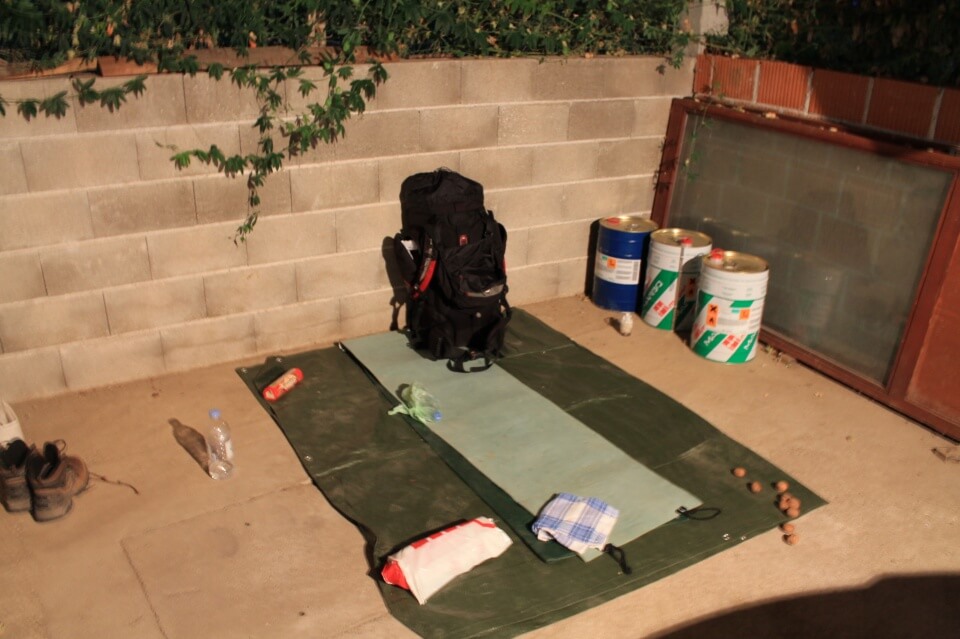
Sarah Marquis, who spent three years walking from Siberia to Australia, felt that the biggest danger is coming from people. Therefore, she fully focused her journey into the wilderness and avoiding contact with locals.
In my opinion, the beauty of traveling on foot is that it offers the possibility of making contact with people living in the area through which we walk, so I use sleeping as the possibility of exercising that contact. During a walk through Istria in 2011 I followed a marked hiking trail and walked ten days without a tent. I asked the local people for accommodation and thus achieved incredible contacts and knowledge of the area through which I passed. Through this experience I realized that walking offers a different dimension of approaching people. Our natural speed and a backpack on our backs do not cause fear, but curiosity that can be used to obtain a modest shelter.
Body aches, blisters and fatigue are common companions for walkers. If our physical condition is not good, it is expected that during the journey we get minor injuries and that pain will follow us for a while. Pain in the knees, hips, tendons and shoulders are common occurrences. So it would be advisable to travel relaxed and slowly for the first few days. This allows your body to adjust. Fear of pain due to poor physical fitness should by no means hinder the desire to travel on foot. While walking Camino de Santiago I had the pain in my knee and tendon. At first, I was angry because I couldn’t follow my travel mate, until I realized that this pain was a great excuse to walk slowly and stop when I want. Pain slowed my movements and warned me of undue haste as a result of our daily lives.
Blisters cause majority of problems for walkers. Some regard them as medals for distance traveled, but for me they are my fiercest enemy. The only help with avoiding blisters is prevention, and this will be achieved if our shoes are comfortable, as well as the purchase of high quality socks. It would be good to acquire the habit of removing shoes during the breaks to give your foot some time to dry out, or to change sweaty socks during walking.
If you do get a blister, the best would be to puncture it with a needle with a string. The string is left in the blisters and the knot is tied, which enables the creation of hole that does not close, and through which the blister empties and dries out over several days. It is very likely that blisters appear in the same place during each walk. Then it would be a good to put a plaster to protect the area during the entire trip.
ALONE OR WITH SOMEONE
Like with traveling in general, walking alone or with someone are two completely different experiences. If we walk with someone, we have to think how well do we know this person. Few days of traveling with someone sometimes feels like couple of years of coexistence. Disagreement with your fellow traveler during walking can greatly complicate, if not ruin your journey, as opposed to independent walking in which we are directors of our movement, speed and breaks. Such an experience of walking offers the possibility of getting to know loneliness and ourselves. This of course does not mean that we can not experience the same experience in the company of someone else. After all, alone or with someone, everything depends on us.
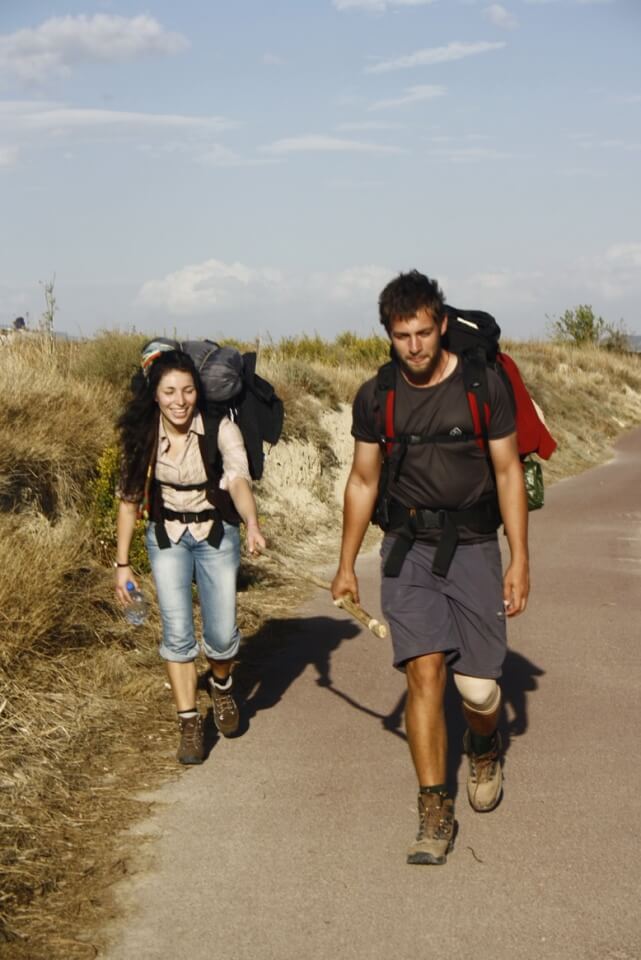
WHY WALKING?
It all starts with the desire to get to know an area, fantasizing about how to connect two dots on the map, or some cool project. But at the end, our walking gives us the experience of getting to know yourself and your own purpose. While walking, we live in a reality through our senses. The first few days we go through detoxification of the body and mind. Physical pain caused by fatigue is unbearable for our mind which is related to the safety and comfort that we left behind.
But after a few days, our body is trained and our mind becomes one with the body and the moment that surrounds it. Over time, we see the beauty of everyday simplicity. We check the time only when starting our day journey and setting the alarm clock before going to sleep. The connection to the land and nature that surrounds us fills us with peace and purpose. Each step marks the convergence of the desired goal. We become aware of the freedom given to us and we are entering a timeless dimension in which we are the main creators of our mood. We get a chance to feel who we actually are and which way to march through life.
Common to all the people who have embarked on the journey on foot is that in addition to the external trip through the country and the area through which they pass, they have the opportunity to travel through their own being.
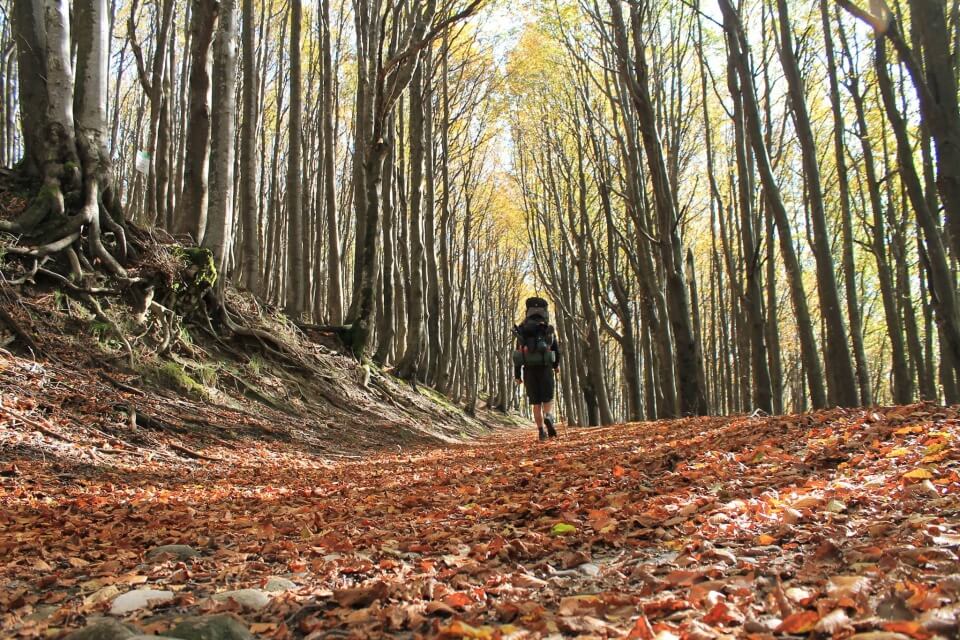
WHERE TO WALK?
We can walk everywhere. Whether we walked for a day or more, chances to return home disappointed by the decision we made is minimal. There are a lot of marked trails passing through beautiful places in the world. In Europe, the most famous pilgrimage route is Camino de Santiago in Spain. The entire Spain is marked with paths that lead to Santiago. The most popular route is the Camino Frances, which begins in the French Pyrenees and ends at the Spanish coast of the Atlantic Ocean. The route is 880 kilometers long and it takes 30 to 35 days to walk. On the way you can find accommodation of different quality and price. Annually Camino counts over 200,000 walkers. There is also medical help for people who walk, and for a few euros you can move your backpack to the next place of accommodation in case of injury or fatigue.
In addition to Camino, the more popular becomes the Italian Via Francigena, which is slightly more expensive than Camino. In the world, people often engage in walking in Nepal or Peru, in the direction of Machu Picchu.
COSTS OF TRAVELING ON FOOT
The most expensive part of traveling on foot is the purchase of clothing and equipment. Cheap and poor quality equipment can certainly affect our enjoyment while traveling.
Travel expenses are entirely individual matter. Costs on the Camino de Santiago should not exceed 12 euros per day, which is only possible if you cook your own food and do not spend on unnecessary things. The journey on foot can be very cheap if you are willing to travel completely independently. Sleeping in a tent and cooking for ourselves can be done cheaper than living in your everyday life.
So, smile on your face, and hit the road.
Previous post
Privacy overview.
Travelling Claus
Travelling the world by bicycle, on foot and as a tour leader.

- Being a tour leader
This is why I love to travel by foot.
I love to travel by foot.
I am mostly known as a bicycle traveler, as I often travel with my bike. But I am also an avid long distance walker and here is why I love to travel by foot too.
Hiking in Albania.
I work in travel and tourism and often work as a tour leader on longer trips, where we are rushing from one place the other. So when I am not working, then I like to travel slow and this is why I love to travel by foot.
You see all the places and say hello to everyone..
Walking through Izmir suburbs in Turkey.
One thing that is great about walking as a way of travel, is that you see everything you pass. You won’t suddenly miss a great view or an interesting quirky sight because you were looking away for a few seconds. When you walk, you go so slow that you get to see everything, both pretty and ugly and I like that. You pretty much say hello to everyone that you walk past, unless you are a shy introvert.
By actually talking to all the people you pass, you get the country a little better under your skin in my opinion. i often end up having nice conversations with locals that i talk to along the way, because by walking, i can not avoid talking at least a little to the locals. and that makes for a better trip in my opinion., you see the places in between the famous sights..
On the way to Stansted Airport, by foot.
One thing is to see all the places that the guidebooks tell you about. But if you really want to know what everyday life in the country is like, then you need to visit some of the places in between the big sights. Walking is just perfect for that matter. Having been traveling for over 2 decades, I am quite tired of the big famous places where you have a million tourists. I like the ordinary little places better. It’s not that I am tired of traveling in any way and I will keep traveling +300 days a year for many years to come. But I prefer the places in between the big tourist sights.
You get fit when you travel by foot..
You get fit when you walk around these mountains.
One of the obvious advantages by traveling by foot is that you get fit from it. I have a job where I live in hotels and eat in restaurants almost every day and that makes me put on too much weight when I work. So I am very happy that I can get back into shape and lose a bit of weight when I travel by foot.
You wind down mentally when you walk..
Chilling out and walking to Santiago de Compostela.
Walking long distances is one of the best stress killers you can find. I have a lot of stress in my work life and love to just walk walk walk down the road. All while I am thinking about all the things I have to deal with, without having to be disturbed constantly by people who call me. Schedules that have to be kept. And so on. There are very few things in life that make me relax better than when I take a good long walk.
Danish philosopher søren kierkegaard said: “ above all, do not lose your desire to walk. everyday, i walk myself into a state of well-being & walk away from every illness”. i couldn’t agree more., i can walk a scenic trail or a random highway..
Walking on a crater rim on the Azores.
For me traveling by foot is mostly about walking for the sake of walking. I often just walk 20-30 kilometers a day down a random highway, because I like it as a way of transporting myself. Sure I also like to walk more well known trails and I have hiked in Nepal. Walked the Camino Portuguese to Santiago. The Tour de Mont Blanc and many other well known trails. But I have also walked to several airports around the world. Even if it’s not the most glamorous of walks, I often end up walking on busy highways and through dodgy parts of the city by doing that, but I like to walk these roads too. Because I get some experiences of everyday life there that I would not get if I just took the bus or a taxi to and from the airport.
So i will keep walking the roads of the globe and i hope that i will see many of you fellow hikers out there. tomorrow i will be walking to faro airport in southern portugal if any of you are out there 🙂, and should you want to read some blogposts about my walks around the world, then tere are several blogposts about walks all around the world on this link.
You can only see this, if you travel by foot.
Walking, Tour de Mont Blanc.
Hiking on Sao Jorge Island on the Azores.
Hiking the Pinatubo volcano in the Philippines.
Walking through a rapeseed field in Denmark.
Canyon walking in Israel.
Walking to the top of the Rinjani volcano in Indonesia.
Hiking in Cappadocia.
And it’s better for the environment to walk or cycle too 🙂
I totally agree – whether is a big city or a small trail you see so much more when you travel this way. All the little things and the people you miss engaging with when you drive. It also forces you to really slow down and take in exactly where you are.
When I read your site!!! I just close my eyes and imagine !! Exactly you told we can just walk walk walk down on the road….and think about all the things …. I love it❤❤❤❤❤❤ tnx for share your experience with us❤

Leave a Reply Cancel reply
Your email address will not be published. Required fields are marked *
Currently you have JavaScript disabled. In order to post comments, please make sure JavaScript and Cookies are enabled, and reload the page. Click here for instructions on how to enable JavaScript in your browser.
Please follow & like me on social media
Recent Posts
- Cycling down the west coast of India.
- Abandoned places
- Accommodation reviews
- Bars around the world
- Cat sitting
- Crazy stuff
- Czech Republic
- Food and drinks around the world
- Football travel
- General travel
- Global lifestyle
- My opinion on travel related things.
- Netherlands
- Philippines.
- Train travel
- Travel books.
- Travel movies
- Travel warnings
- Uncategorized
Privacy Overview

Travelling Atlas
Travel Blogger
THE ULTIMATE GUIDE TO VISITING ROME ON FOOT

Rome, the Eternal City, is a treasure trove of history, art, and culture that attracts millions of visitors every year. One of the best ways to experience the magic of Rome is by exploring it on foot. Wandering through its ancient streets allows you to soak in the rich heritage and immerse yourself in the city’s charm like a local. This ultimate guide will help you plan an unforgettable journey through Rome on foot, uncovering iconic landmarks, hidden gems, and authentic experiences along the way.

Comfortable Footwear and Clothing
Before embarking on your walking adventure, make sure to wear comfortable shoes and clothing. Rome’s cobblestone streets can be uneven, so sturdy and supportive footwear is essential. Dress in layers and wear breathable fabrics to stay comfortable in the city’s varying weather conditions.
Have a good plan of what you want to see
Rome is a big city, and it can be difficult to see all the famous landmarks in one day. Make sure to prioritize which sites you want to visit and plan ahead to make sure you give yourself enough time to explore.
Start at the Historic Center
Begin your walking tour at the heart of Rome, the Historic Center. This area houses some of the city’s most famous attractions, such as the Colosseum, Roman Forum, and Palatine Hill. Spend ample time exploring these ancient wonders, and don’t forget to book your tickets in advance to avoid long queues.
Meander Through the Quaint Streets of Trastevere
Cross the Tiber River to Trastevere, a bohemian neighborhood with narrow, winding streets and a vibrant atmosphere. This area is perfect for leisurely strolls, offering picturesque alleys, local markets, and charming cafes. Indulge in some authentic Roman cuisine and experience the essence of traditional Italian life.
Discover the Pantheon and Piazza Navona
Make your way to the Pantheon, an awe-inspiring ancient temple that now serves as a Catholic church. Marvel at the grand dome and the remarkable engineering of this well-preserved monument. Head to Piazza Navona afterward, where you will find stunning fountains, cafes, and street artists adorning the lively square.
Admire the Artistic Masterpieces in Vatican City
From Piazza Navona, walk to Vatican City, the world’s smallest independent state and home to the Vatican Museums and St. Peter’s Basilica. Prepare to be amazed by Michelangelo’s frescoes in the Sistine Chapel and the breathtaking beauty of St. Peter’s Square.
Wander Among the Ruins at the Roman Forum
Step back in time as you explore the Roman Forum, once the political, social, and economic center of Ancient Rome. Wander through the ancient ruins, arches, and temples and try to envision the grandeur of this historical site.
Take a Relaxing Walk Along the Tiber River
After a day of sightseeing, unwind with a leisurely walk along the Tiber River. The Lungotevere promenades offer beautiful views of Rome’s bridges and skyline, making them an ideal spot to watch the sunset.
Enjoy Evening Passeggiata
Join the locals in the traditional Italian evening passeggiata, or leisurely stroll, in charming neighborhoods like Campo de’ Fiori or the Spanish Steps. Savor the lively atmosphere, shop for souvenirs, and relish the gelato or espresso culture.
Get an audio guide for a self-guided tour
There are many great audio tours of Rome that will help you better understand the city’s history. Audio tours are convenient, affordable, and an easy way to learn about all the famous sites you’ll be seeing.
Make sure to rest at some point
Walking around Rome can be exhausting, and it’s always a good idea to take a rejuvenating break from time to time and get recharged to get the same enthusiasm and energy back for the rest of the miles left uncovered. So make sure to plan for plenty of rest stops as you explore. Grab a snack or take an hour or two and sit in one of the city’s many parks or piazzas.
Exploring Rome on foot is a captivating journey that allows you to experience the city’s history, art, and culture up close. From the ancient wonders of the Colosseum and Roman Forum to the artistic masterpieces in Vatican City, every step reveals a new layer of this enchanting destination. So put on your comfortable shoes, get ready to immerse yourself in the Eternal City’s delights, and create memories that will last a lifetime.
Consider Reading – 30 THINGS TO DO BEFORE YOU TURN 30
Recommended Articles

THESE CROATIAN TOWNS SHOULD NOT BE MISSED

EXPLORE THE TIMELESS CHARM OF EUROPE

GOZO : THE FAMOUS ISLAND IN MALTA
Leave a reply cancel reply.
Your email address will not be published. Required fields are marked *
Save my name, email, and website in this browser for the next time I comment.
- Daily Crossword
- Word Puzzle
- Word Finder
- Word of the Day
- Synonym of the Day
- Word of the Year
- Language stories
- All featured
- Gender and sexuality
- All pop culture
- Grammar Coach ™
- Writing hub
- Grammar essentials
- Commonly confused
- All writing tips
- Pop culture
- Writing tips
Advertisement
- travel on foot
verb as in pound the pavement
Weak matches
- hit the road
- hit the trail
- walk the tracks
verb as in traipse
Strongest matches
Strong matches
- knock about
- take a walk
verb as in walk
- perambulate
- wend one's way
Discover More
Related words.
Words related to travel on foot are not direct synonyms, but are associated with the word travel on foot . Browse related words to learn more about word associations.
verb as in travel far on foot
verb as in move along on foot
On this page you'll find 102 synonyms, antonyms, and words related to travel on foot, such as: count ties, hit the road, hit the trail, and walk the tracks.
From Roget's 21st Century Thesaurus, Third Edition Copyright © 2013 by the Philip Lief Group.
- Search Please fill out this field.
- Manage Your Subscription
- Give a Gift Subscription
- Newsletters
- Sweepstakes
Passenger Calls Out Couple Cuddling on Airplane in Photo, Exposing Bare Feet in the Aisle: 'My View'
Two airplane passengers raised eyebrows for their chosen positions during their flight
Alix Joseph/X
An air traveler couldn't believe his eyes when he watched a couple seated just ahead of him cuddle throughout their four-hour flight.
It's no secret that getting comfortable on a plane can be a challenge. Passengers are limited in the positions they can be in, in a confined space. That didn't stop one ambitious couple from laying down across their three-seat row , cuddling each other.
"I can't believe my view on the plane," the traveler tweeted . "It was like this the whole four-hour flight 😆😆."
Never miss a story — sign up for PEOPLE's free daily newsletter to stay up-to-date on the best of what PEOPLE has to offer, from juicy celebrity news to compelling human interest stories.
A few people thought the moment he captured between the couple was cute, noting that in one photo, you could see the two making a heart with their hands.
"i want what they have," one X (formerly Twitter) user shared.
However, many travelers noted they wouldn't want someone's bare feet facing the aisle and other passengers.
"I'm more mad that they’re barefoot," they wrote.
Alex Kraus/Bloomberg via Getty Images
The topic of whether it’s acceptable for passengers to take off their shoes on planes has been a continual heated debate in the travel realm. Last fall, PEOPLE chatted with writer and adviser Nicole Campoy Jackson of Fora Travel to get an expert opinion on proper plane etiquette.
“I'm a firm believer in covered feet on a flight. If that's shoes, great. If that's socks, great,” Jackson said. “But no one should have bare feet on a plane. If you've worn sandals to the airport, bring a pair of socks with you for the flight."
- Search Please fill out this field.
- Manage Your Subscription
- Give a Gift Subscription
- Sweepstakes
- Travel Products
We Asked Flight Attendants to Reveal the Shoes They Wear on Long Travel Days — Here, 11 Comfy Picks From $30
The travel professionals have spoken.
If you click on links we provide, we may receive compensation.
Travel + Leisure
This morning I hoofed it from the Ritz-Carlton New York, Central Park down to my new hotel, NH Collection New York Madison Avenue . I dropped off my luggage, then I walked west to the Neil Simon Theatre to pick up my tickets for MJ The Musical before strolling east on 42nd Street to get to Summit One Vanderbilt where I enjoyed a bird’s eye view of the Big Apple (where I’ll probably log another 10,000 steps before noon tomorrow). Still, I wasn’t worried about my feet. I treat them to flight attendant-approved footwear .
Why are flight attendants the next best thing to podiatrists in my book? They’re on their feet all day. Yesterday, I flew Qantas’ 16-hour flight from Auckland to JFK. I never saw any of the flight attendants sitting or even leaning against the lavatory. They were always standing or walking, and more importantly, doing it with gusto. Their secret? It isn’t Red Bull (I’ve guzzled gallons and have never grown a single feather let alone wings). It’s their shoes.
Unfortunately, or fortunately, airlines don’t give flight attendants footwear with their uniforms. Instead, flight attendants have to use trial and error to find the comfiest, cutest shoes that adhere to their airlines’ dress codes. But thanks to word-of-mouth — flight attendants love to share best practices — they usually succeed. The result? Walking a mile in their shoes isn’t painful, it’s actually pleasant. I recently polled several flight attendants to see which pair(s) they wear for travel, both for work and leisure, and below are the results.
Hoka Bondi 8 Sneakers
“They feel like walking on a yoga mat,” Favian Flores, a flight attendant for United, told me. He packs these APMA (American Podiatric Medical Association)-approved shoes because “consolidation is key” and he likes being able to wear them for sightseeing as well as for workouts. His bonus tip? “Opt for a white or off-white color to match all your outfits.” On Zappos, they come in 23 colors and have more than 2,700 five-star ratings. “I noticed many nurses wearing Hoka,” wrote one shopper who spent two weeks visiting her mom. “My feet had been hurting, so I gave them a try…and loved them. Just returned from a two-week vacation, walking much more than normal, and my feet feel great.”
NAOT Footwear Women's Argus Sneaker
Meanwhile, Katie Storck, a Southwest flight attendant for more than a decade, told me not even a pair of Louboutins can get between her and her favorite sneakers. “They’re easy and quick to remove as well as being super comfortable for walking through airports and breathable to keep on your feet for long flights.” Despite the lace-up look, they’re slip-on and the knit fabric means they’re slightly stretchy, which comes in handy when your feet swell. The removable footbed “molds to the shape” of your foot, and the padded cups keep your heels from hurting. While they’re relatively new and only have one rating (albeit five stars) so far, NAOT has been in business since 1942.
Dansko Women's Professional Clog Slip-on
Jennifer Vincenzo McLucas’ mom didn’t retire from her flight attendant career until she was 76. These shoes were one of the reasons she lasted so long. “Her crewmates would be cranking about their aching feet, and she — at often twice their age — would be tootling right along.” Dansko’s “anti-fatigue rocker bottom” helps with stability, and the reinforced toe box is great for durability. Currently, they come in dozens of colors and styles. I had a fun felt confetti back in college and wore them all over New York City where I went to school. More than 70 percent of this clog’s ratings are perfect five-star ratings with most coming from professionals who work on their feet. “These shoes served me well in medical school,” said one shopper . “When I’m traveling, I have noticed that I prefer to wear these rather than tennis shoes. On the airplane, my feet swell and I constantly have to fiddle with my shoelaces to readjust. These shoes are great during security screening, fast to take off, fast to put on.”
Franco Sarto Women's Bocca Slip-on Loafer
After 35 years of service, Delta flight attendant Hermann Ortiz can confidently say that rubber soles are the way to go. And Ortiz loves a slip-on. This particular pair of Italian-designed loafers for women features a reasonable 1-inch heel, a rounded toe, and 100 percent leather. It’s available in 11 colors and has nearly 3,000 five-star ratings. “I’ve been a flight attendant for over 20 years and these are the only shoes that don’t kill my feet after working 14-plus-hour nights on the plane,” wrote a flight attendant .
ECCO Men's New Jersey Slip-on Loafer
Personally, Ortiz sports these slip-on ECCO loafers. “My flights are long haul, usually between 9 to 17 hours, so comfort is important,” he told me. They’re made with full-grain leather, the heel is 1.25 inches, and they have Ortiz’s favorite: rubber soles. Many of the more than 2,000 five-star ratings come from professionals who work on their feet all day. “These got me through three trade shows over three weekends in a row,” recalled one satisfied shopper who says they’re their “go-to” shoes for traveling because, in addition to being comfortable, “they look classy enough to wear with a suit, or to dress down with a pair of jeans.”
Clarks Men's Whiddon Step Loafer
When it comes to dress shoes, Flores doesn’t sugarcoat it. “They can often be uncomfortable,” he admitted before telling me that he prefers Clarks when he’s working. “They are affordable, durable, and the slip-on design without laces makes them incredibly convenient for traveling.” Available in four colors, they all feature Clarks’ removable signature OrthoLite footbed which minimizes shock impact and wicks away moisture. They have more than 1,000 five-star ratings including this five-star review by another flight attendant who wears them daily praising their “ perfect fit .”
Soda Top Shoes Jaber Ankle Boot
When it came to choosing a career, Allison Uno chose to follow in her flight attendant mom’s footsteps. She’s been servicing Hawaiian Airlines travelers for nearly 20 years now, and she has lots of opinions when it comes to footwear. When she wears pants while traveling, she prefers a pair of boots like these faux leather ankle boots with a nice chunky heel. They’re surprisingly lightweight for being so sturdy and having a 2.5-inch heel. Choose from nine colors, and know that because they’re slip-on, they’re perfect for going through TSA. Many of the 2,300 five-star ratings refer to a short break-in period, and they’re overwhelmingly positive. “Day two: I got 20,000 steps and could have kept going,” reads a review titled “ Cute and durable .”
Dream Pairs Women's Chunky Heel Knee-high and Up Boots
In the winter, you’ll find Storck rocking this look. “The chunk heel makes them comfortable for long days of work and travel,” she told me before confessing that she also wears them off the job. This particular pair has a 2.5-inch heel and features a soft, faux-fur lining and insole. The zipper makes them easy to put on and take off. They’re currently available in seven colors, and more than a few of the nearly 3,500 five-star ratings come from flight attendants. “Comfortable and classy,” described one flight attendant who appreciates all the compliments they get on these shoes. “These really are a dream pair of boots,” they said.
LifeStride Women's Rozz Mary Jane Pumps
Come summertime, Storck is usually sporting these best-selling (they have more than 3,600 five-star ratings) Mary Jane pumps from LifeStride. “The block heels help increase the surface area your foot is applying pressure to and makes them comfortable enough to be on your feet for hours,” she explained to me. By far her favorite heels, they feature a 2-inch heel, faux leather upper, rounded toe, and adjustable buckle strap. Plus, they come in both medium and wide widths in three colors. “I can wear these for a three-day trip at work and not have pain or foot fatigue like so many other shoes,” wrote one flight attendant who says they’re also her favorite after trying “literally dozens and dozens of different kinds of shoes.”
Clarks Women's Emslie Lulin Pump
When Uno wears her uniform, which includes a knee-length skirt, she opts for these practical 100-percent Mary Jane pumps. They’re made of leather and include Clarks’ signature “impact-absorbing OrthoLite footbed.” With a 2.16-inch heel, they make your legs look longer and give you added height, but they’re not so tall you risk twisting your ankle. Many of their 1,100 five-star ratings come from flight attendants. “Love these,” wrote a flight attendant in training , who said, “Now everyone from my class has ordered a pair, too.”
Rockport Women's Total Motion 75mm Pointed-toe Pumps
Siobhan Grogan, a flight attendant for JetBlue, has tried her fair share of Clarks and Naturalizers (two brands beloved by flight attendants) before ending on this 3-inch pair of heels which she told me “hit spot on.” More specifically, she said, “I have high arches, and I can walk through airports in these shoes and on the aircraft all day, sometimes 12 hours, and these heels are the best” On Amazon, they come in 20 different colors and materials including leather, suede, and faux snakeskin. Many of the 530 five-star ratings praise the removable padded insole. “It’s like walking in my slippers,” summed up one flight attendant who describes themself as a “self-proclaimed full-time fashionista.”
Love a great deal? Sign up for our T+L Recommends newsletter and we’ll send you our favorite travel products each week.
See More T+L Shopping Deals
:max_bytes(150000):strip_icc():format(webp)/tl-best-hiking-deals-tout-de042697b45a4c28be404f67772c4e7e.jpg)
- All Wellness
- All Skin Care
- Moisturizers
- Mineral Sunscreens
- Sunscreens for Kids
- Sunscreens for Dark Skin
- SPF Lip Balms
- Under Eye Patches
- All Hair Care
- Purple Shampoos
- Thinning Hair
- Head Shavers
- Hair Dryers
- All Oral Care
- Electric Toothbrushes
- Toothpastes
- Mouthwashes
- Water Flossers
- Meal Kit Delivery
- Gluten-Free Meal Kit Delivery
- Disposable Face Masks
- Air Purifiers
- Eco-Friendly Laundry Detergents
- Natural Deodorants
- Period Underwear
- All Fitness
- Exercise Bikes
- Walking Shoes
- Fitness Trackers
- Reusable Water Bottles
- Blackout Curtains
- Sound Machines
- Home & Kitchen
- All Home & Kitchen
- Kitchen Appliances & Tools
- All Kitchen Appliances & Tools
- Coffee Makers
- Kitchen Gadgets
- Small Home Appliances
- All Small Home Appliances
- Air Conditioners
- Space Heaters
- Humidifiers
- Bedding & Bath
- All Bedding & Bath
- Bath Towels
- Silk Pillowcases
- Duvet Inserts
- Office Chairs
- Standing Desks
- Desk Organizers
- Seat Cushions
- Under Desk Ellipticals
- All Outdoor
- Raised Garden Boxes
- Garden Hoses
- Beach Towels
- Solar Pool Covers
- Grilling Accessories
- Electronics
- All Electronics
- Wifi Routers
- Gaming Consoles
- Streaming Devices
- Instant Cameras
- Handheld Gaming Consoles
- 3D Printers
- All Headphones
- Noise Canceling
- Wireless Earbuds
- Smart Gadgets
- All Smart Gadgets
- Smart Watches
- Smart Bulbs
- Garage Door Openers
- All Computers
- Gaming Laptops
- Laptops for College Students
- Computer Monitors
- Ergonomic Keyboards
- Dog Carriers
- Litter Boxes
- Scratching Posts
- Cat Carriers
- All Pet Care
- Nail Clippers
- Flea & Tick
- All Luggage
- Lightweight
- Weekender Bags
- Accessories
- All Accessories
- Luggage Tags
- Travel Pillows
- Tech Gadgets
- Packing & Organization
- All Packing & Organization
- Packing Cubes
- Toiletry Bags
- Gift Guides
- All Gift Guides
- Valentine's Day
- All Valentine's Day
- For Any Loved Ones
- Mother's Day
- All Mother's Day
- Last Minute Gifts
- Best Mother's Day Gifts
- For Moms Who Have Everything
- Best from Amazon
- All Graduation
- For College Grads
- For High School Grads
- For Teachers
- Father's Day
- All Father's Day
- Best Father's Day Gifts
- For Dads Who Love Fishing
- Holiday Season & Christmas
- All Holiday Season & Christmas
- Gifts Under $25
- Practical Gifts
- Other occasions & loved ones
- All Other occasions & loved ones
- For Grandparents
- For Bridal Shower
- For New Parents
- For Any Occasion
- Deals & Sales
- All Deals & Sales
- Most Popular This Month
- Sales This Week
- New & Notable
- What to Buy This Month
- All Sleep Week
- Body Pillows
- Sleep Week Sales
- CNBC Select
- All CNBC Select
- Credit Cards
- Small Business
- Personal Finance
- Credit Monitoring
- Help for Low Credit Scores
- Sign up for the Select Newsletter
- Check out Shop TODAY
- Privacy Policy
- Do Not Sell My Personal Information
- Terms Of Service
- NBC News Sitemap
Follow Select
Burning, itchy feet? You might have athlete’s foot — here’s how you treat it
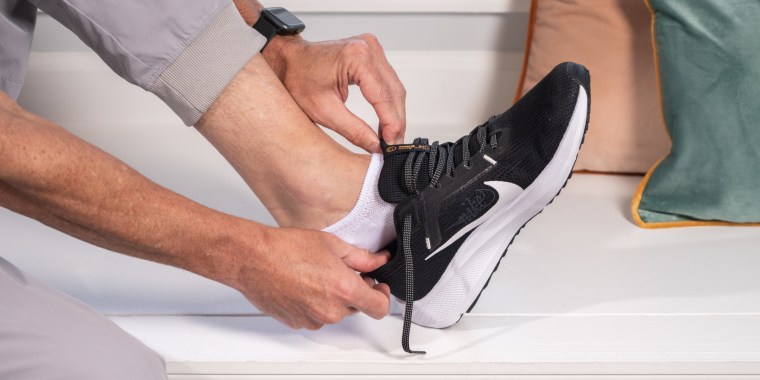
“Athlete’s foot, also known as tinea pedis, is a fungal infection that affects the skin of the feet,” explains Dr. Mohammad Rimawi , a board-certified podiatrist in New York City. Left untreated, athlete’s foot can get uncomfortable (read: itchy and uncomfortable). But to treat it, you must understand exactly what it is and how to figure out if you have it.
Below, podiatrists explain exactly what athlete’s foot, the most common symptoms and how to treat it (with over-the-counter treatments or otherwise).
SKIP AHEAD What is athlete’s foot? | How do you treat athlete’s foot? | How we picked the best over-the-counter athlete’s foot treatments | Treatments for athlete’s foot | Are some people more prone to athlete’s foot?
Selected. Our top picks

select How to identify your foot arch type with water and a piece of cardboard
What is athlete’s foot.
Simply put, athlete’s foot is an infection. “It is caused by fungus — something that thrives in warm, moist environments,” says Rimawi. Now, think about your shoes: They can get warm and swampy. Fungus thrives in environments that are warm and moist. You can also pick up the type of fungus that causes athlete’s foot through exposure. “Common ways people get athlete’s foot include walking barefoot at public places like the pool or gym, poor hygiene and tight-fitting socks which allow moisture to accumulate on the skin,” says Rimawi. Another thing to know: Though athlete’s foot sounds singular, you can get it on both feet simultaneously
Symptoms of athlete’s foot
It’s not too difficult to tell if you have athlete’s foot — the symptoms are usually quite obvious. “Signs of athlete’s foot include scaling, dryness, blistering, redness, burning or stinging,” says Dr. Bruce Pinker , a board-certified podiatrist and foot surgeon in New York. It often occurs on the bottom of the foot, especially on heels or between the toes. Some people may only experience a few of these things, while others may experience all the symptoms simultaneously. It’s also not unusual for symptoms to start fairly mild and then get worse as time goes on.
How do you treat athlete’s foot?
Ready for some good news? “Luckily, treatments for athlete’s foot have a high success rate,” says Rimawi. “The first thing you want to do is eliminate the causative factors.” That means you should stop walking barefoot in public places like the gym shower or at the airport. If your feet sweat a lot, change your socks and shoes often. Beyond this, you’ll likely also need some sort of medication. Over-the-counter, topical creams work very well in most cases, adds Rimawi. If you have a bad case of athlete’s foot, you may need a doctor to prescribe you oral medication.
How we picked the best over-the-counter athlete’s foot treatments
Over-the-counter creams are a go-to for athlete’s foot, which makes it easy to treat this condition if you get it. Below, experts share what you should pay attention to when shopping for an over-the-counter treatment for athlete’s foot:
- The active ingredient: “Look for a treatment that contains clotrimazole, which has good efficacy against a wide spectrum of fungi that cause athlete’s foot, says Rimawi. “This ingredient has been available for a long time and is well studied.” Other active ingredients similar to clotrimazole that can also work for athlete’s foot are tolnaftate, terbinafine hydrochloride and butenafine hydrochloride.
- The formula: reams, sprays and powder are all available, so think about what makes the most sense for you and will be easiest for you to apply.
- Ratings: All over-the-counter treatments we included have at least a 4.0-star average rating from at least 1,000 reviews.
Treatments for athlete’s foot
Below, we rounded up over-the-counter treatments for athlete’s foot that either were recommended by an expert or that meet the criteria our experts set forth and have a high rating.
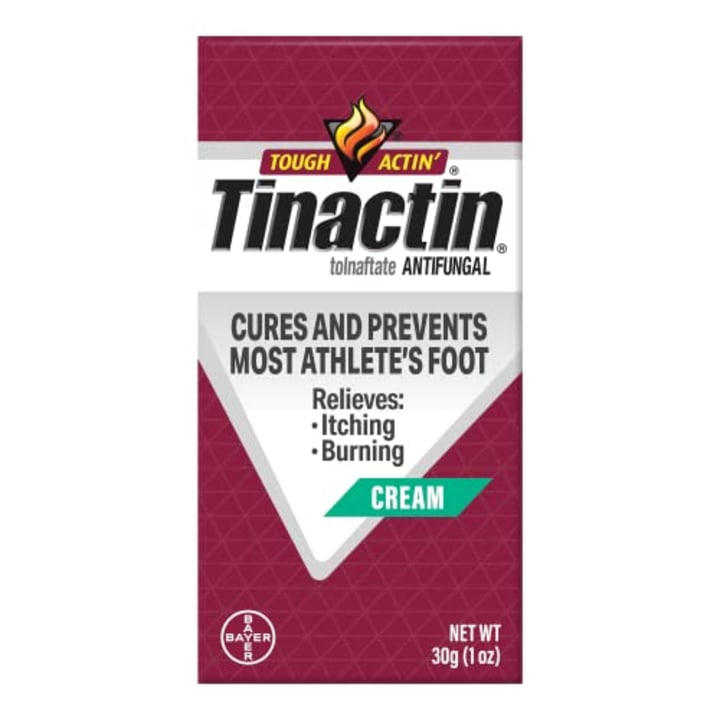
Pinker says he has found this cream effective for many people with athlete’s foot. The active ingredient in this treatment is tolnaftate, which reduces itching and burning while eliminating fungus. Tinactin is available in a cream and a spray .
Lotrimin Ultra Pen
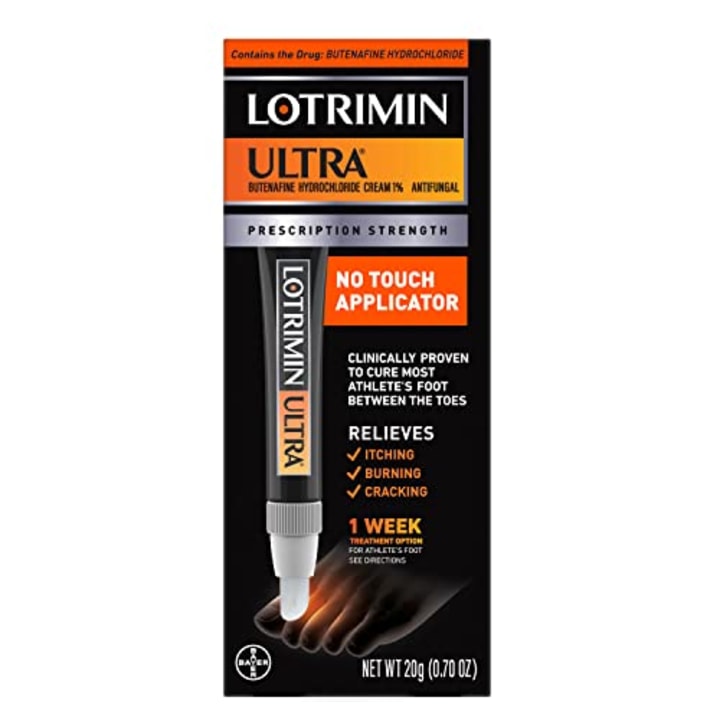
Another recommendation from Pinker, Lotrimin Ultra, contains the active ingredient butenafine hydrochloride, which alleviates the symptoms of athlete’s foot while also getting rid of the fungus. According to the brand, this cream is greaseless and odorless and won’t stain your socks. This option is a cream that comes in a pen applicator, which means you can rub the pen tip over infected areas without touching the area with your fingers. This can help prevent the spread of the fungus.
Lamisil 1% Athlete’s Foot Cream
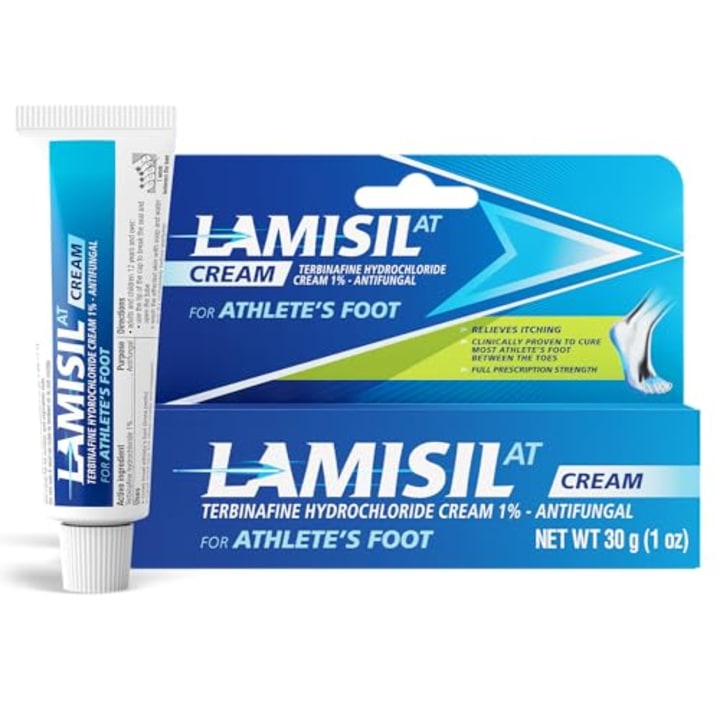
This antifungal cream uses another form of hydrochloride (terbinafine hydrochloride) to treat athlete’s foot. Pinker says it is another popular option and should be used twice daily weekly to eliminate athlete’s foot. According to the brand, before applying, wash your feet and then apply a small amount to the infected and surrounding areas.
Dr. Scholl’s Instant Cool Athlete’s Foot Treatment

Dr. Scholl’s Instant Cool Athlete’s Foot Treatment
The spray, which has a 4.5-star average rating from over 3,110 reviews on Amazon, feels cooling as it goes on. This can relieve the burning and itchy sensation caused by athlete’s foot. The active ingredient is tolnaftate, and the spray makes it easy to apply. According to the brand, not only does this spray treat athlete’s food, but you can also use it preventatively.
Family Care Clotrimazole Anti-Fungal Cream

Rimawi recommends clotrimazole as a great over-the-counter option to treat athlete’s foot and this cream has a 4.4-star average rating from over 1,900 reviews on Amazon. The cream can also be used to treat jock itch and ringworm. Apply this cream twice a day to the infected area for a week.
Are some people more prone to athlete’s foot?
Anyone can get athlete’s foot, but some people are more prone to it. Take, for example, athletes. It got its name because athletes are more likely to get sweaty feet in their sneakers and are more prone to walking barefoot in a locker room — two things that can lead to this condition.
Beyond athletes, anyone exposed to conditions that lead to warm, moist feet is more likely to deal with athlete’s foot. “People with weakened immune systems may also be more prone to it,” says Rimawi. “Fungi are opportunistic organisms that take advantage of you at your weakest.” Pinker says that those who suffer from hyperhidrosis—meaning they sweat excessively—are also more likely to encounter athlete’s foot. If you tend to sweat, changing your shoes and socks regularly can help.
Meet our experts
At NBC Select, we work with experts with specialized knowledge and authority based on relevant training and/or experience. We also ensure all expert advice and recommendations are made independently and without undisclosed financial conflicts of interest.
- Dr. Mohammad Rimawi is a board-certified podiatrist in New York City.
- Dr. Bruce Pinker is a board-certified podiatrist and foot surgeon in New York
Why trust NBC Select?
Bethany Heitman is a contributor at NBC Select and a journalist who regularly covers topics like beauty, home and lifestyle. For this story, she interviewed podiatrists about athlete’s foot.
Catch up on Select’s in-depth coverage of personal finance , tech and tools , wellness and more, and follow us on Facebook , Instagram , Twitter and TikTok to stay up to date.
Bethany Heitman is a contributing editor at NBC Select.
I spent $2,000 for 7 nights in a 179-square-foot room on one of the world's largest cruise ships. Take a look inside my cabin.
- I booked a stateroom on Royal Caribbean's Wonder of the Seas, one of the biggest cruise ships.
- For $2,000 a week, the 179-square-foot cabin had a private bathroom, a king-size bed, and a view.
- I thought I'd feel cramped in the room, but it had everything I needed and left no space unused.

In April 2022, I cruised on board Royal Caribbean's Wonder of the Seas . At the time, it was the largest cruise ship in the world , but the title has since been replaced by Royal Caribbean's Icon of the Seas .
During my voyage, the ship sailed to Roatán, Honduras; Cozumel and Costa Maya in Mexico; and Royal Caribbean's private island in the Bahamas .
For $2,000, I spent seven nights in an ocean-view stateroom on deck eight. The cruise was on sale, as it was originally priced at $3,000. Take a look inside the 179-square-foot space.
My room was a mid-tier cabin at the front of deck eight.
I booked a mid-tier room — a step above interior staterooms , which have no window. It's a category below staterooms with a balcony , and two steps below a suite.
My cabin was on the same deck as Central Park, an outdoor space with 20,000 plants.
I thought it was the most relaxing area on the ship, so I enjoyed being close by.
When I stepped inside my stateroom, I was surprised at how big it felt.
Right away, I thought the cabin made great use of a small space.
To operate most of the electricity in the room, I had to insert my room key into a slot on the wall.
I appreciated the energy-saving system.
On one side of the room, I had a mirror and a desk with several outlets to charge electronics with USB, American, and European ports.
I thought the desk was useful for eating, as well as storing daily flyers about the day's events.
Next to the desk, a set of drawers included a cabinet with a minifridge inside.
The desk drawers were mostly empty aside from a hair dryer, which I didn't end up using.
Across from the desk, I had a couch positioned in between two closets.
Inside each closet, I found a rack of hangers, shelving, and a small safe. I thought it was plenty of space for a weeklong journey
Next to the couch and desk area, a small bathroom used clever storage hacks, like placing the trash can and toilet paper under the counter.
In the bathroom, there were two glasses, a bar of soap, and a two-in-one hair and body wash.
At the top of the shower, a pullout clothing line was useful for drying my bathing suits.
Each night, my stateroom attendant replenished towels and brought flyers and schedules for the next day.
Sometimes, the towels were folded creatively to look like animals.
I noticed that my king-size bed at the back of the room was actually two twin beds pushed together.
All Royal Caribbean cabins come with this configuration, according to its website , so they may be separated for additional guests. I often woke up in the crevice.
A large flat-screen TV was mounted across from the bed with storage hooks below.
Skinny nightstands on either side of the bed held lamps, charging ports, and a room phone on one side.
Because I booked an ocean-view room, I was able to look out over the front of the ship from a window above my bed.
The window was equipped with an electronic shade that could be opened during the day for grand views and closed when I was ready to sleep.
While I thought the room might have been a tight space for a couple with a lot of luggage or a family, it was just right for me.
And watching the sun rise over the Caribbean Sea from the comfort of my room was the best part.
- Main content

This 8-foot-long ‘saber-toothed’ salmon wasn’t quite what we thought
For years, paleontologists thought this ancient salmon was like a saber-toothed cat, but now facial reconstruction offers a brand new look.
When paleontologists announced the discovery of the largest salmon to have ever lived in 1972, they thought they had found the aquatic equivalent of the saber-toothed cats that roamed the landscape when this fish was alive between 12 and 5 million years ago.
The eight-foot-long fish was believed to have had two curved teeth jutting down from its upper jaw. But now, a new reconstruction has fundamentally altered the face of this iconic fish, proposing instead that its impressive teeth stuck out sideways from its snout—like a warthog.

In an April study published in PLOS ONE , experts present a new vision of the spike-toothed salmon, formally known as Oncorhynchus rastrosus . The changes to the salmon’s face reflect new knowledge about the fish gleaned from the fossil record. In 2016 , paleontologists found that the ancient salmon’s distinctive teeth changed as the fish aged, growing as the salmon reached adulthood and transitioned from the sea to freshwater.
This study, by Philadelphia College of Osteopathic Medicine paleoecologist Kerin Claeson and colleagues, now finds that the fish’s famous teeth stuck out sideways like tusks.
A bold new look
Refining what the fish looked like rested on both new fossil finds and a reanalysis of the first fossils to be described half a century ago. Among the earliest finds, the part of the jaws holding the prominent teeth were disarticulated from the rest of the skull. “Part of the reason why scientists didn’t recognize the position of the teeth at first was because they were all found in isolation,” Claeson says. A downward, saber-like position seemed reasonable given that no other known fish had such teeth.

But in 2014, paleontologists searching a locality in Oregon found new fossil skulls of Oncorhynchus rastrosus that showed the prominent teeth still in articulation. Combined with CT scans of the original finds, the new fossils confirmed that different sexes of the spike-toothed salmon had the prominent teeth in adulthood.
Finding the spikes on different salmon sexes came as a surprise to the researchers. “When I talked to the collectors of the 2014 fossils, they kept finding fossils in close proximity in such a way they were likely breeding pairs, which both possessed the enormous spikes,” Claeson says. All spike-toothed salmon started to go through skull changes as they approached adulthood, each fish growing the iconic spikes.
“The new reconstruction is supported by very convincing evidence,” notes University of Alberta paleontologist Mark Wilson, who was not involved in the new study. The fact that the spikes were found as a species-wide trait, he noted, is especially remarkable.
Naturally, the unusual nature of the spikes has led paleontologists to wonder why such features evolved and what they were used for. Previous research indicated that some of the teeth in adult fish were blunted and worn, hinting that they were rubbing against hard surfaces. Perhaps the fish were using the teeth to scrape and move sediment in constructing nests, and could have also been helpful in defending those nests from other fish looking to dig their own divots in the riverbed.

Claeson and colleagues prefer a defensive function for the spikes. The prehistoric salmon, just like their living counterparts, swam with side-to-side motions of the body. Their strongest muscles were devoted to these movements, and also would have allowed the fish to take strong swings against predators or other rivals. Not all experts agree, though. Wilson notes that the fish could have been using the spikes to dig nesting areas, and males could have been using the spikes to intimidate competitors for mates during spawning season.
Regardless of whether the fish were using the spikes for defense or in competition, the teeth were surely formidable. “Imagine a one-pound geology hammer, sharpened, and wielded by 200 pounds of lateral muscle,” Claeson says. The salmon is no longer a sabertooth, but its teeth were just as formidable.
FREE BONUS ISSUE
Related topics.
- PALEONTOLOGY
- FRESHWATER FISH
You May Also Like

This 80-foot-long sea monster was the killer whale of its time

These fish live beyond 100—and get healthier as they age

The 11 most astonishing scientific discoveries of 2023

This 160-million-year-old fish gouged out its victims’ flesh

These fish are 'living fossils'—among the most primitive animals on Earth
- Environment
- Perpetual Planet
History & Culture
- History & Culture
- History Magazine
- Mind, Body, Wonder
- Paid Content
- Terms of Use
- Privacy Policy
- Your US State Privacy Rights
- Children's Online Privacy Policy
- Interest-Based Ads
- About Nielsen Measurement
- Do Not Sell or Share My Personal Information
- Nat Geo Home
- Attend a Live Event
- Book a Trip
- Inspire Your Kids
- Shop Nat Geo
- Visit the D.C. Museum
- Learn About Our Impact
- Support Our Mission
- Advertise With Us
- Customer Service
- Renew Subscription
- Manage Your Subscription
- Work at Nat Geo
- Sign Up for Our Newsletters
- Contribute to Protect the Planet
Copyright © 1996-2015 National Geographic Society Copyright © 2015-2024 National Geographic Partners, LLC. All rights reserved

IMAGES
VIDEO
COMMENTS
Achievement. It could be a couple of miles, it could be thousands. Coming to your finish point, or back to where you started, is a glorious feeling of accomplishment. Read our seven reasons to travel on foot and find out what the attraction to walking really is for us, and how it's something anyone can and should do.
The Crossword Solver found 30 answers to "Travelling on foot", 9 letters crossword clue. The Crossword Solver finds answers to classic crosswords and cryptic crossword puzzles. Enter the length or pattern for better results. Click the answer to find similar crossword clues . Enter a Crossword Clue.
Travel on foot - it's called different things in different countries: walking, trekking, tramping, rambling, hiking, bushwalking, bushbashing…. It's the ultimate slow travel, taking your time to get from one place to the next, as close to the ground and to people as you possibly can. Travel on foot more than just sport: walking is about ...
Tom Turcich set out at 26 to travel the world on foot. He began The World Walk — a five year, seven-continent travel adventure — in the US, adopted a dog, and continued 10,000 miles through ...
Tips for traveling on foot 1) Always give your position to a relative. It is occasional for a walking trip to end in disaster. As long as you keep your common sense and don't venture into dangerous areas, you won't risk much. Contrary to what you were told as a toddler, the world is a relatively safe place. However, don't overdo it.
Travelling on foot. By being on foot I don't just mean trekking or climbing mountains, obviously those are one of the mediums that help you connect well with nature, but simply walking down the road in a new city, looking around, taking frequent halts and exploring the area or just being a part of the place helps you connect with the place a lot better esp. in regards to the local people who ...
It's "traveling on foot." You are reading the world, learning the essence of the world. Chatwin always liked my dictum: "The world reveals itself to those who travel on foot."
If you follow the packing lists in my book Explore Europe on Foot, you'll have everything you need for days (or weeks!) of enjoying both trail and town—all in one carry-on-size backpack that weighs no more than 18-20 pounds (8-9 kg). Here are five general strategies that should govern all of your packing, whether it's clothing ...
Skift Take. Jennifer Bradley was the first British woman to cross the US on foot, a journey that takes more preparation than any standard cross-country journey but provides an unmatchable ...
The Piazza Navona is one of the most famous squares in Rome, dating back to antiquity. It's characterized by its elongated shape, a nod to its former function as a site for athletic competitions. amsterdam , barcelona , london , newyork , paris , rome , san francisco. There are three chief benefits to exploring by foot, when you travel.
Although vehicles are massively useful tools to get us from point A to point B, recent history indicates a revival of traveling on foot. More people are recognizing walking as a healthy, environmentally friendly way to get around and get in touch with their surroundings. Like any form of transportation, traveling on foot doesn't come without ...
Planes, trains, and automobiles all have their rightful place in travel. However, many travelers love getting around town alone, especially avoiding crowded public transportation. Of course, some destinations are more walkable than others, but that makes them even more attractive to self-sufficient, health-minded globetrotters and environmentally friendly. While walking around a new city, you ...
Traveling on foot can even be a sacred and holy act, as pilgrims from most religious faiths can attest. The means of traveling on foot—or in some cases, on one's knees—over a long and arduous route are themselves an act of faith that is equally important as reaching the end, whatever that holy site or destination may be. ...
For example, traveling on foot from village to village will reveal some things that you can't find on the map or the internet because they're hidden from the technological world. You may discover small lakes and untouched parts that are extremely beautiful and worth seeing. You could also get in touch with locals and learn more about the ...
COSTS OF TRAVELING ON FOOT. The most expensive part of traveling on foot is the purchase of clothing and equipment. Cheap and poor quality equipment can certainly affect our enjoyment while traveling. Travel expenses are entirely individual matter. Costs on the Camino de Santiago should not exceed 12 euros per day, which is only possible if you ...
For me traveling by foot is mostly about walking for the sake of walking. I often just walk 20-30 kilometers a day down a random highway, because I like it as a way of transporting myself. Sure I also like to walk more well known trails and I have hiked in Nepal. Walked the Camino Portuguese to Santiago.
This ultimate guide will help you plan an unforgettable journey through Rome on foot, uncovering iconic landmarks, hidden gems, and authentic experiences along the way. Comfortable Footwear and Clothing. Before embarking on your walking adventure, make sure to wear comfortable shoes and clothing. Rome's cobblestone streets can be uneven, so ...
While it is possible to cross the border on foot to be in the DMZ, it's important to note that entering North Korea is not possible due to the technical state of war between the two countries. However, visitors can explore the Ganghwa War Museum and Ganghwa Peace Observatory. Best time to visit: April to June and September to November.
foot, on its own, can be used in the singular instead of feet. a. Viewed with regard to its function, as the organ of locomotion. In rhetorical and poetical use often (in sing. or pl.) qualified by adjs. denoting the kind of movement (as swift, slow, stealthy, etc.), or employed as the subject of verbs of motion.
Find 97 different ways to say TRAVEL ON FOOT, along with antonyms, related words, and example sentences at Thesaurus.com.
Last fall, PEOPLE chatted with writer and adviser Nicole Campoy Jackson of Fora Travel to get an expert opinion on proper plane etiquette. "I'm a firm believer in covered feet on a flight. If ...
Flight attendants shared the 11 best comfortable shoes they always wear for long shifts and travel days. Shop these frequent flier-approved shoes, including Hoka sneakers, Clarks loafers, and more ...
Answers for person travelling on foot (10) crossword clue, 10 letters. Search for crossword clues found in the Daily Celebrity, NY Times, Daily Mirror, Telegraph and major publications. Find clues for person travelling on foot (10) or most any crossword answer or clues for crossword answers.
"Athlete's foot, also known as tinea pedis, is a fungal infection that affects the skin of the feet," explains Dr. Mohammad Rimawi, a board-certified podiatrist in New York City. Left ...
People with flat feet have arches that fall when they put weight on the foot. Fallen arches make the bottom of the foot flat or cause the inner middle part of the foot to touch the floor. In some cases, flat feet can hurt after many years (or even decades). According to StatPearls, about one-quarter of people have flat feet.
Travel I spent $2,000 for 7 nights in a 179-square-foot room on one of the world's largest cruise ships. ... For $2,000 a week, the 179-square-foot cabin had a private bathroom, a king-size bed ...
Some locals had even nicknamed the 3,776-meter (12,388-foot) mountain, called Fuji-san in Japanese, "trash mountain." Maiko participate in a bean festival in Kyoto. The Asahi Shimbun/Getty Images
The Crossword Solver found 30 answers to "traveling on foot", 10 letters crossword clue. The Crossword Solver finds answers to classic crosswords and cryptic crossword puzzles. Enter the length or pattern for better results. Click the answer to find similar crossword clues . Enter a Crossword Clue. A clue is required. Sort by Length.
The eight-foot-long fish was believed to have had two curved teeth jutting down from its upper jaw. But now, a new reconstruction has fundamentally altered the face of this iconic fish, proposing ...
The West Infill project will add 75,000 square feet, increasing space for new security checkpoints, passenger processing and amenities. (Rendering courtesy Austin-Bergstrom International Airport ...